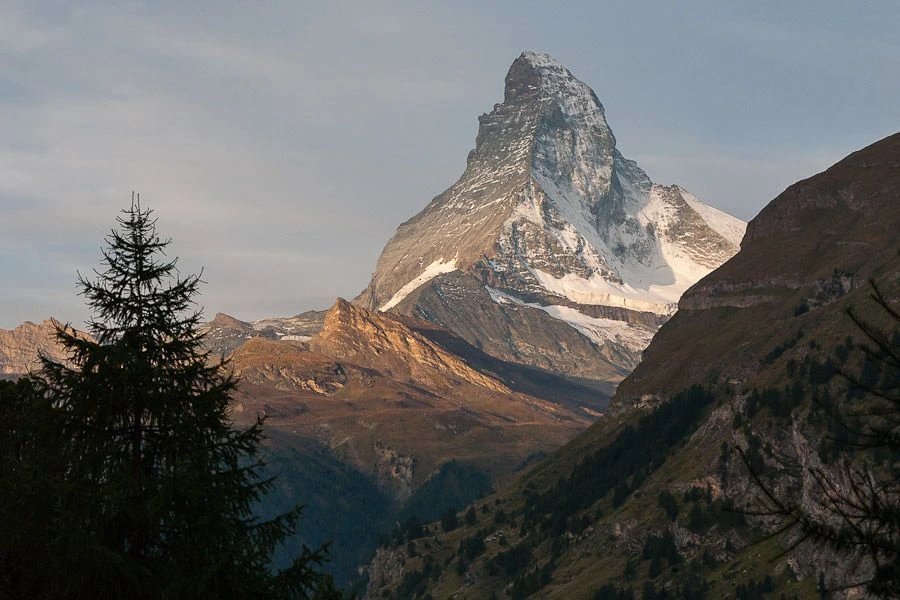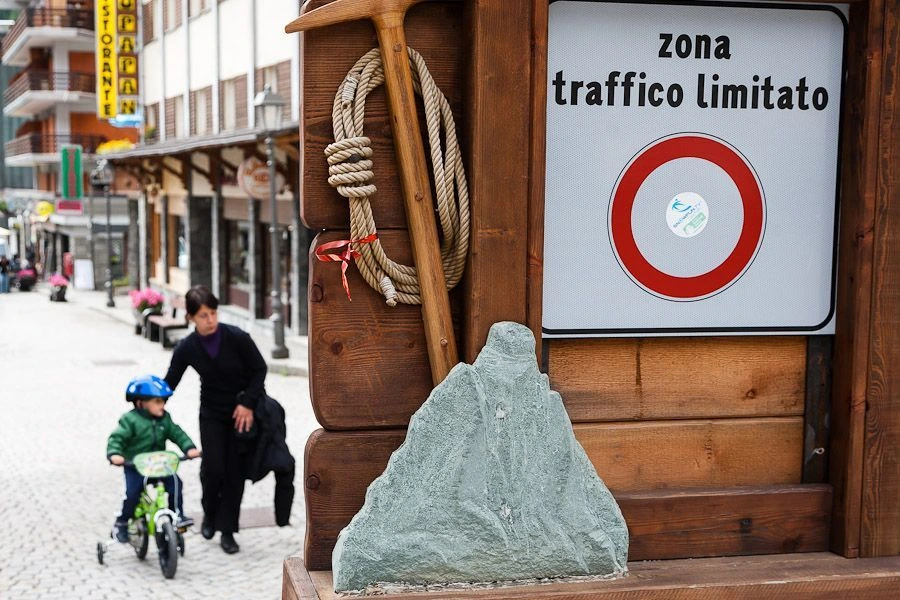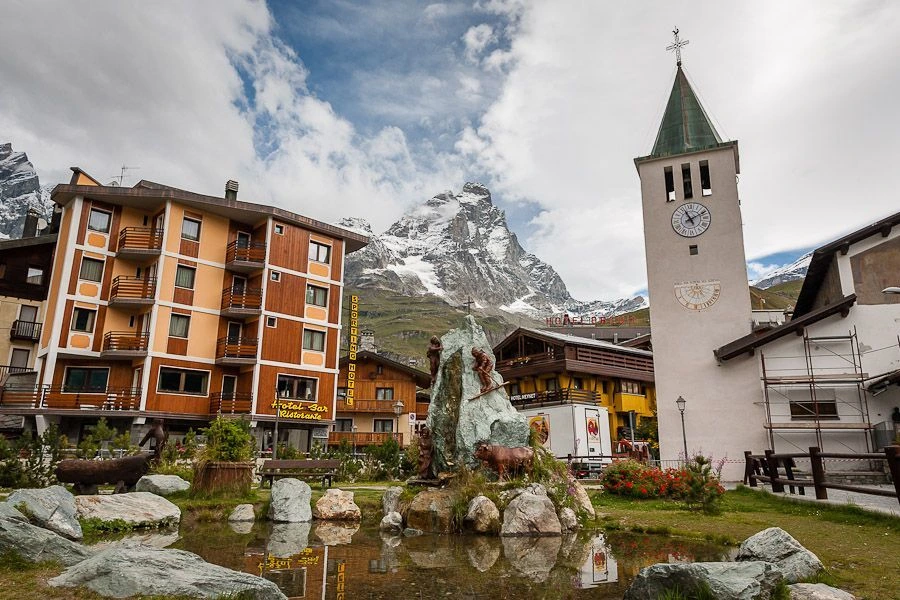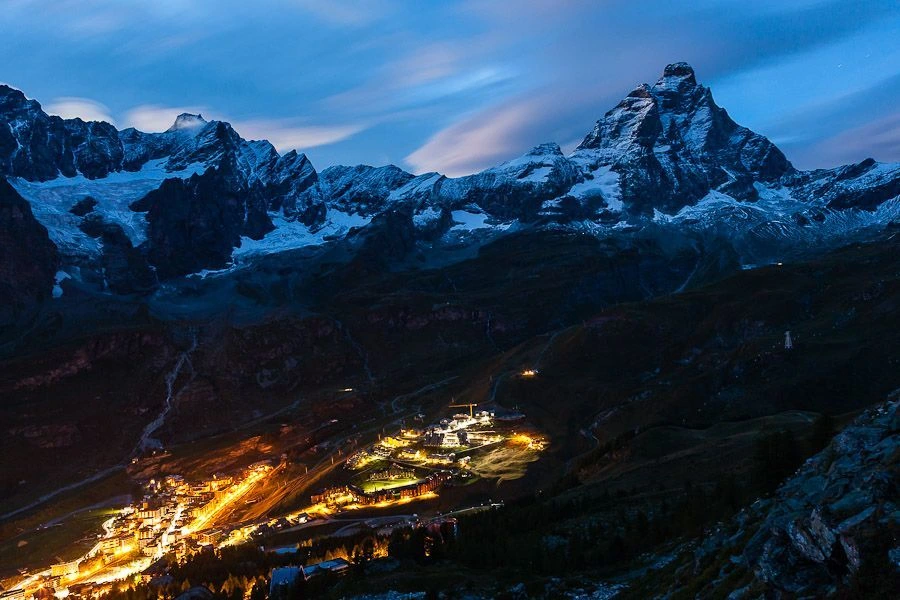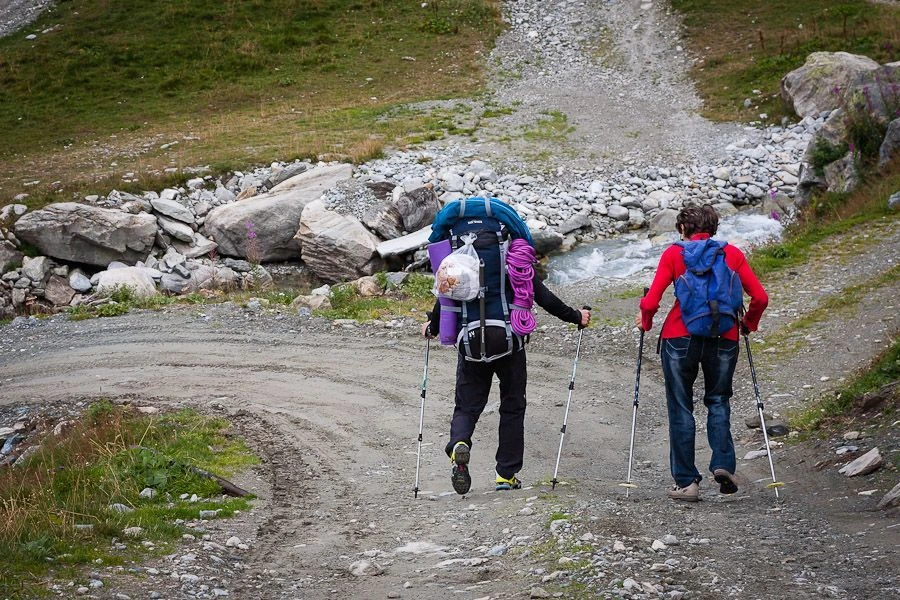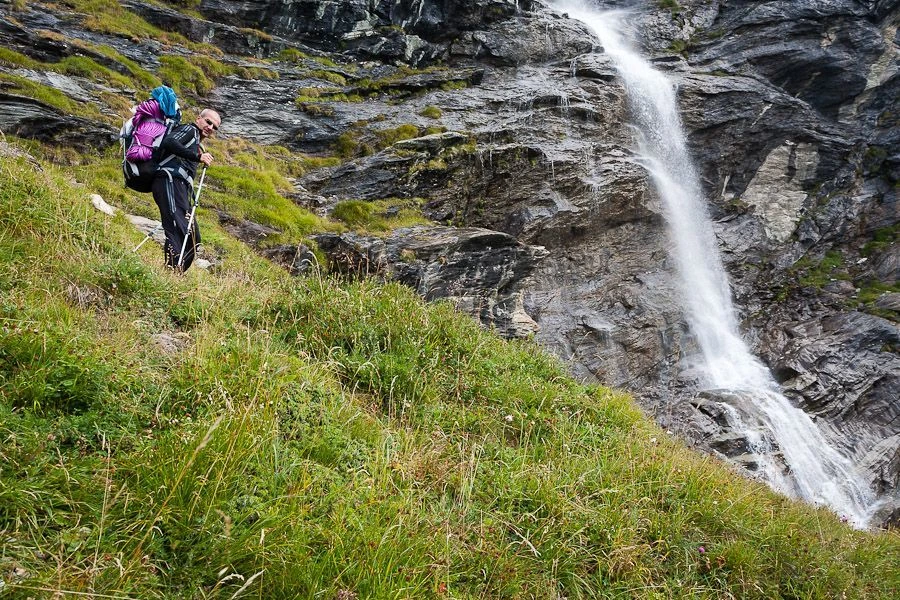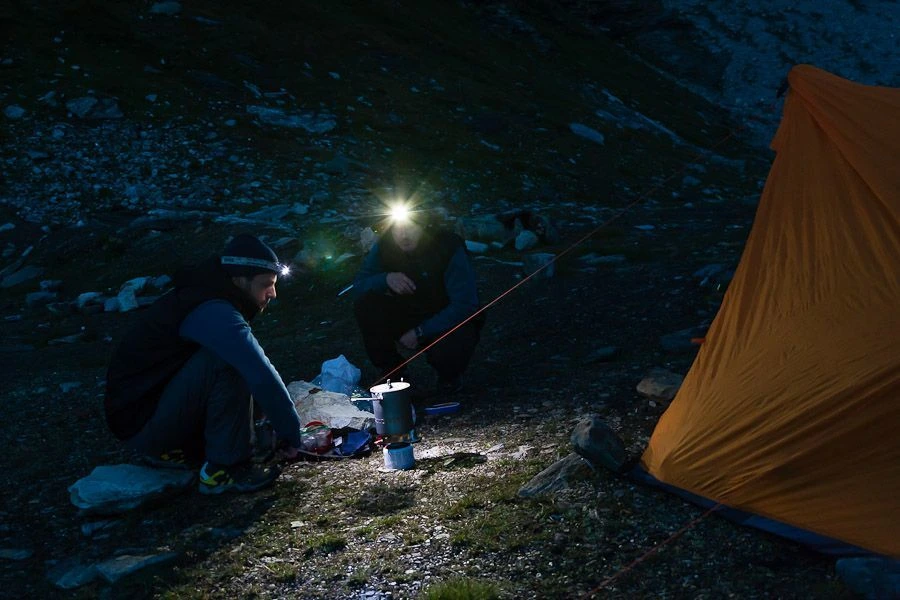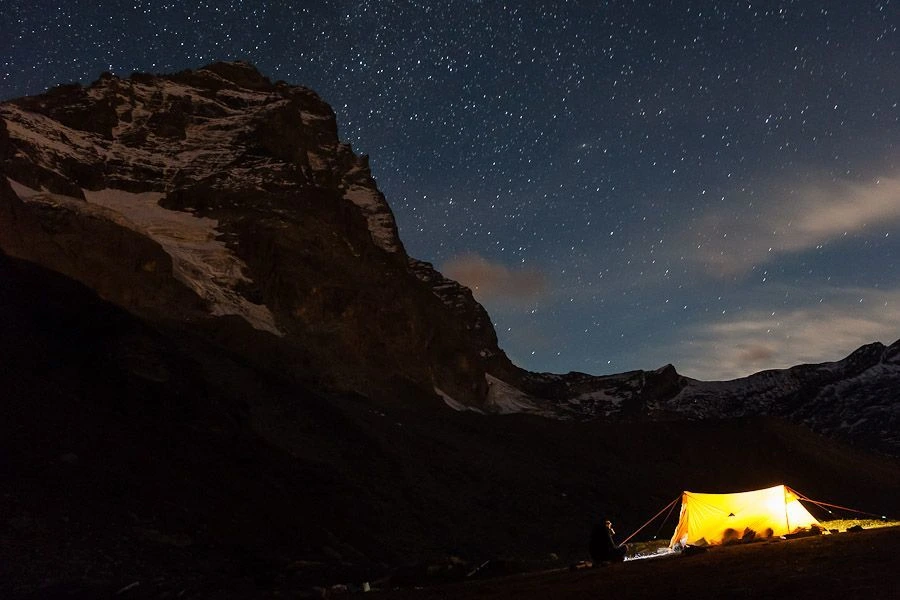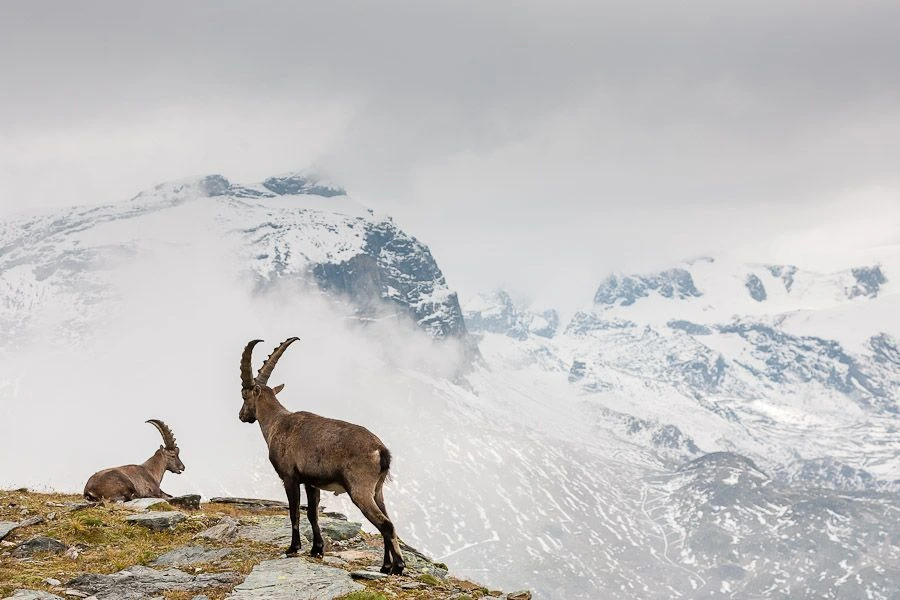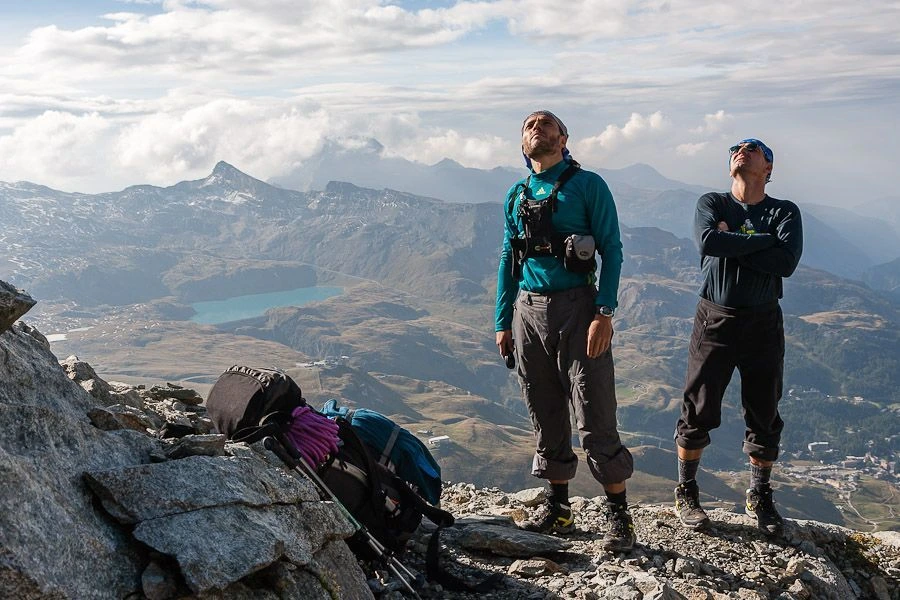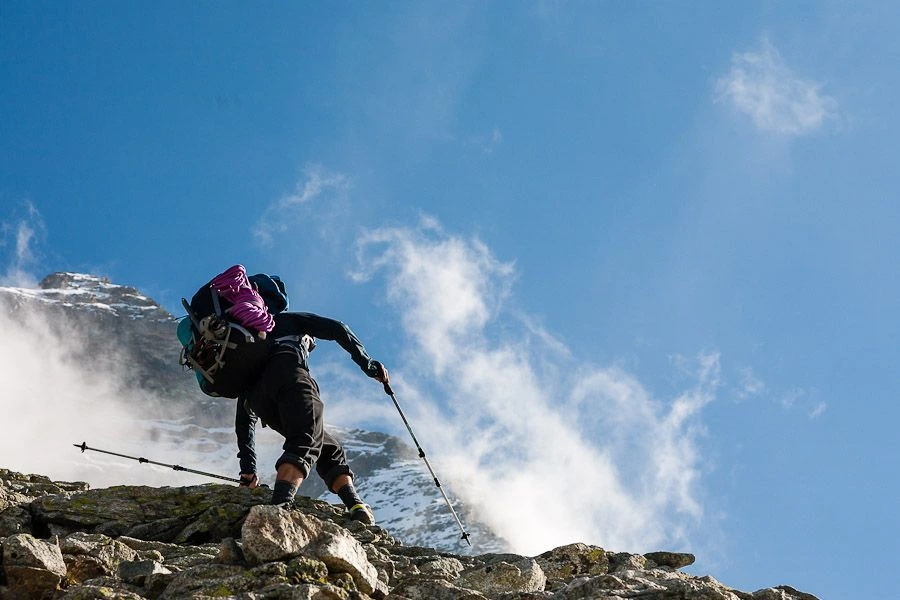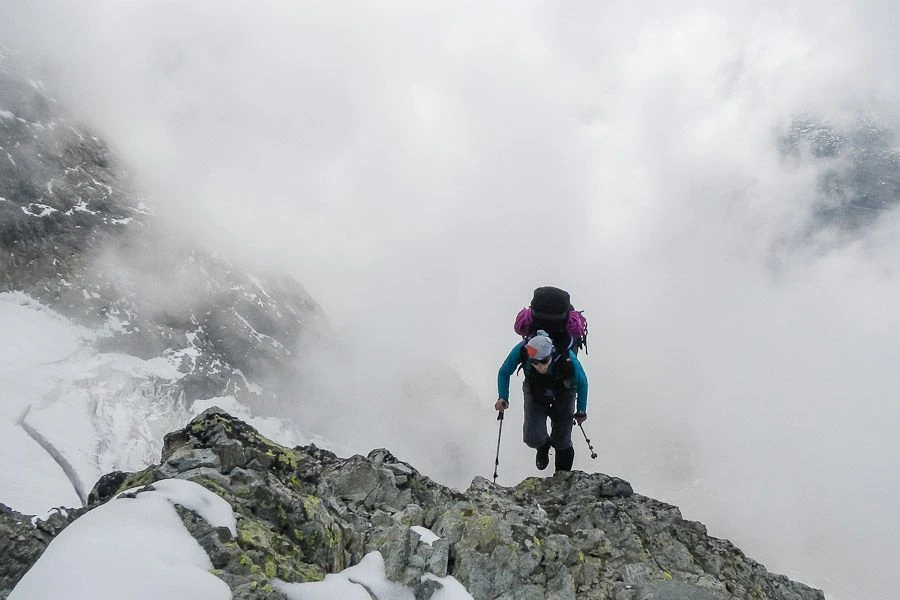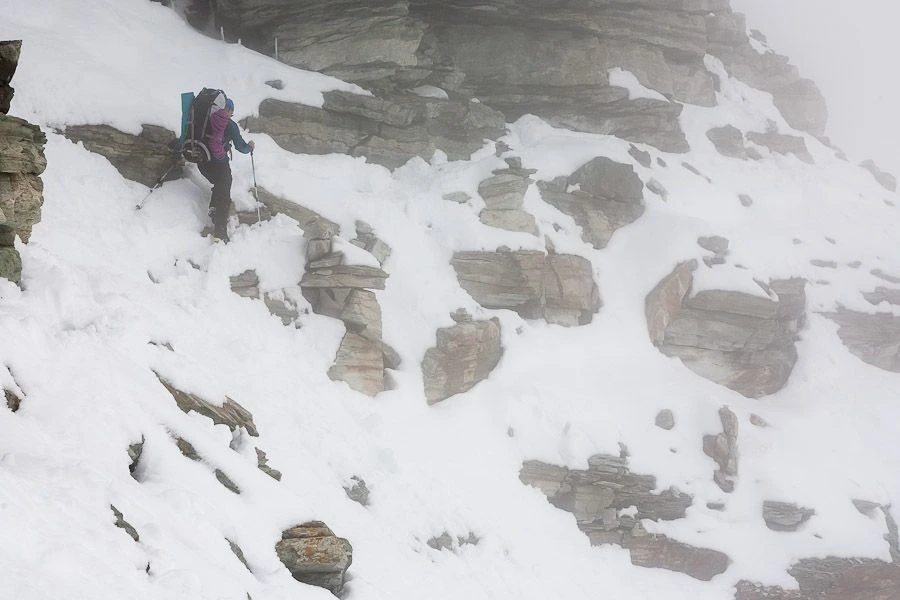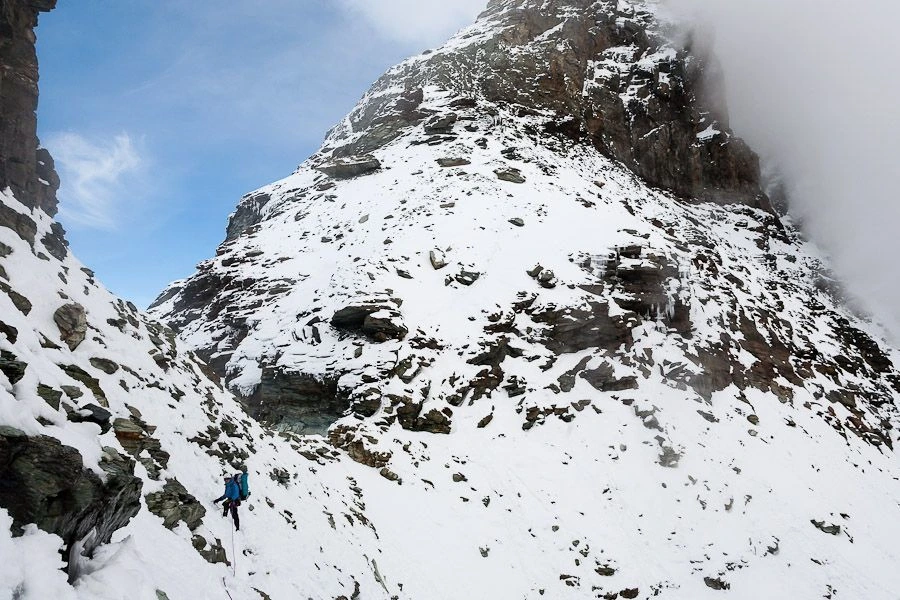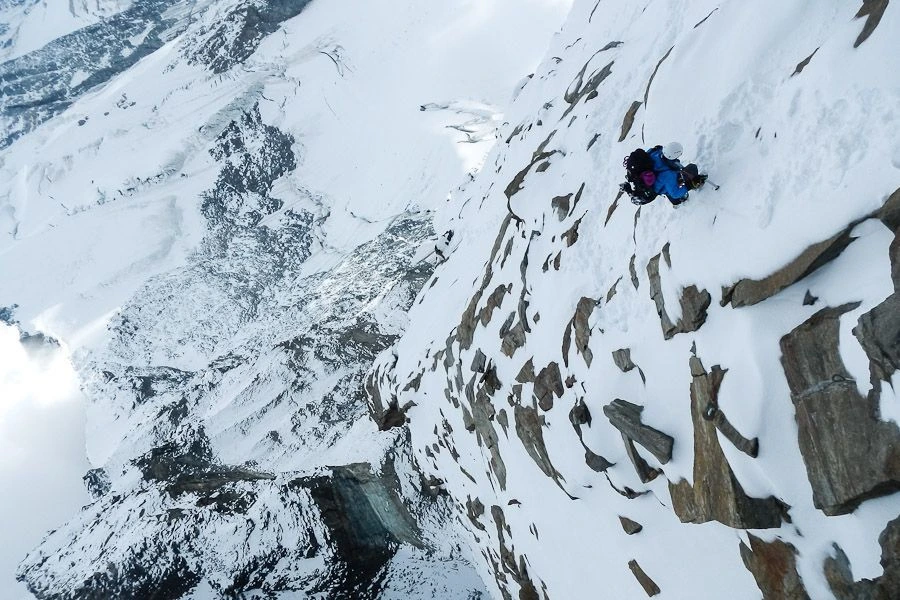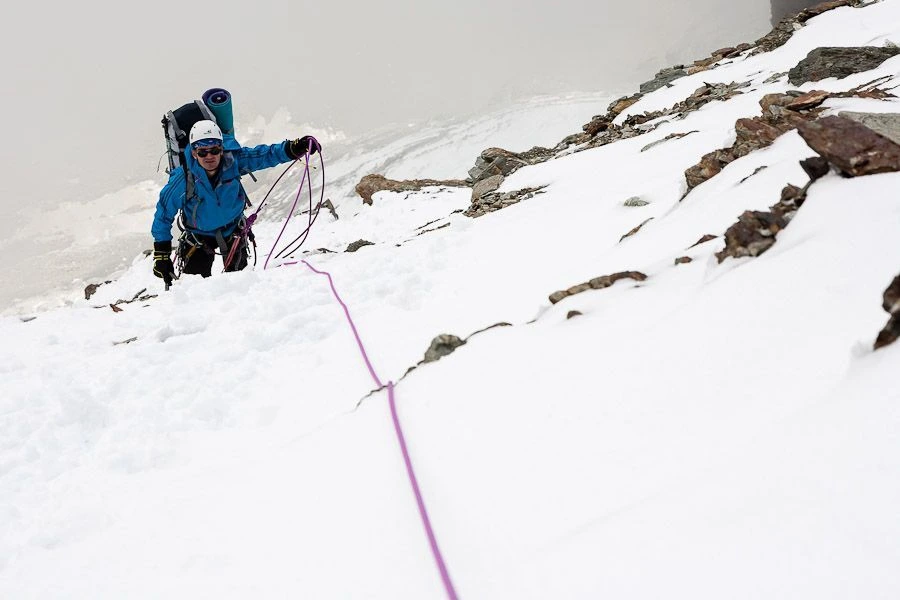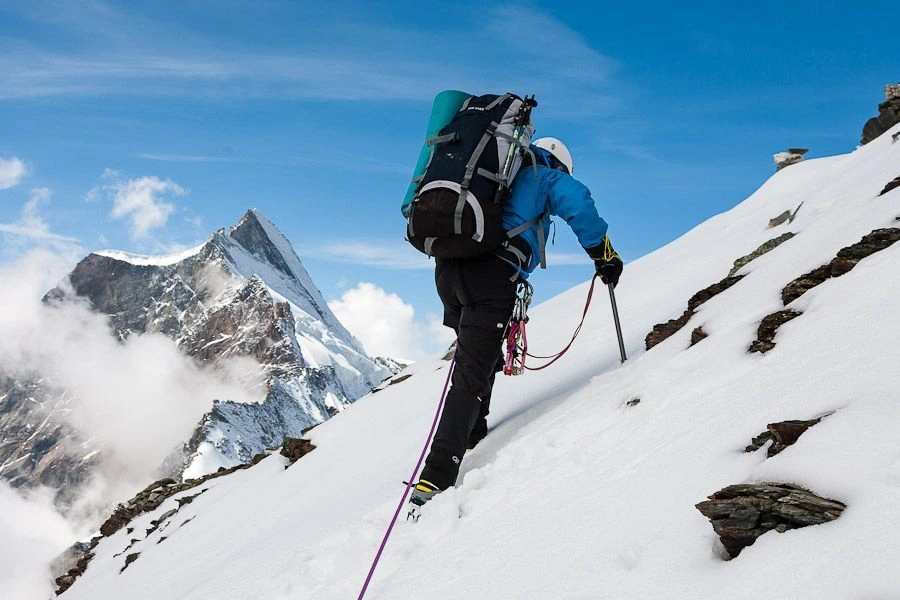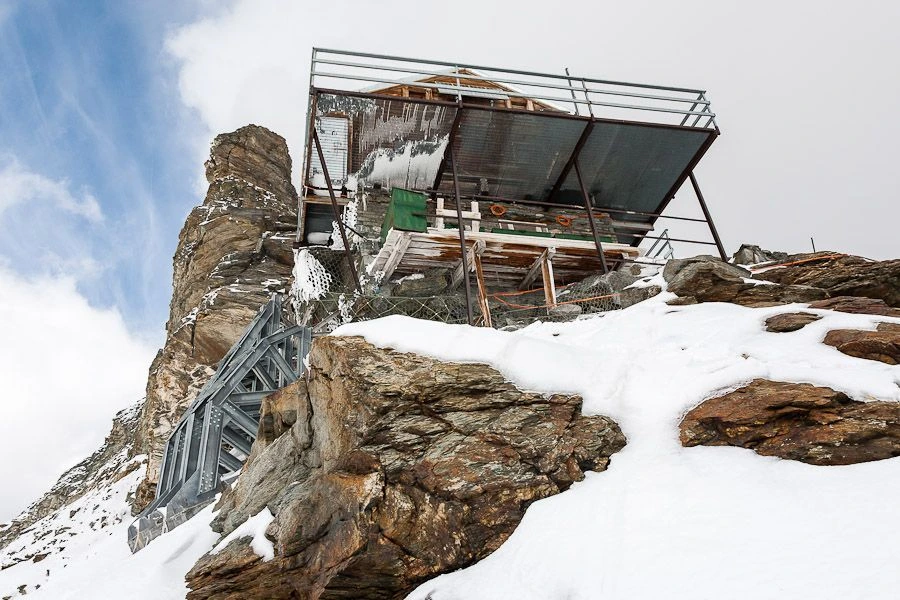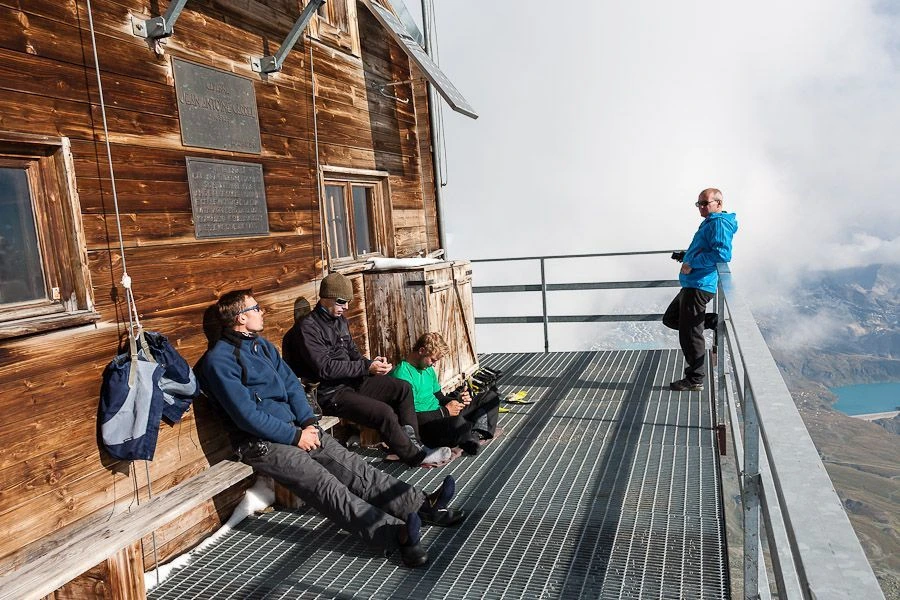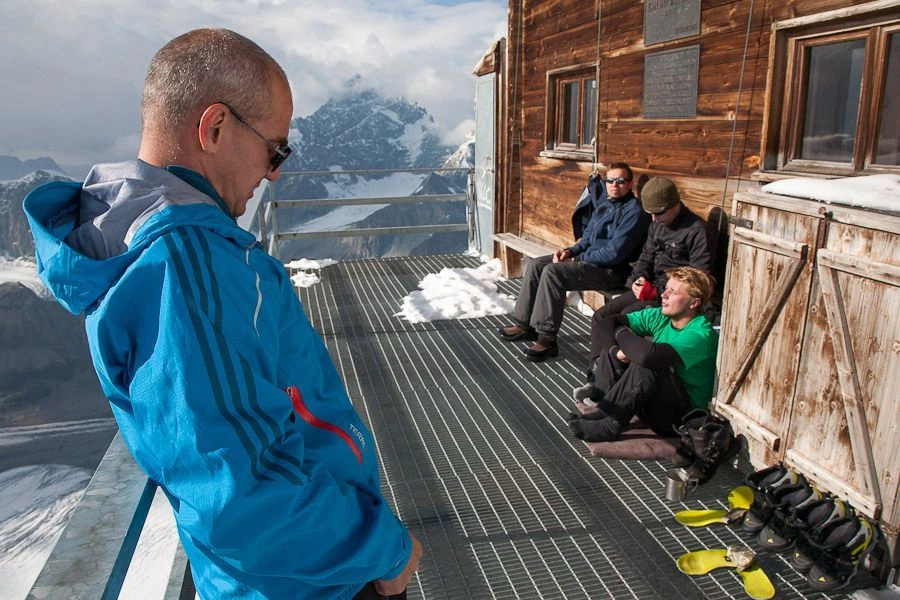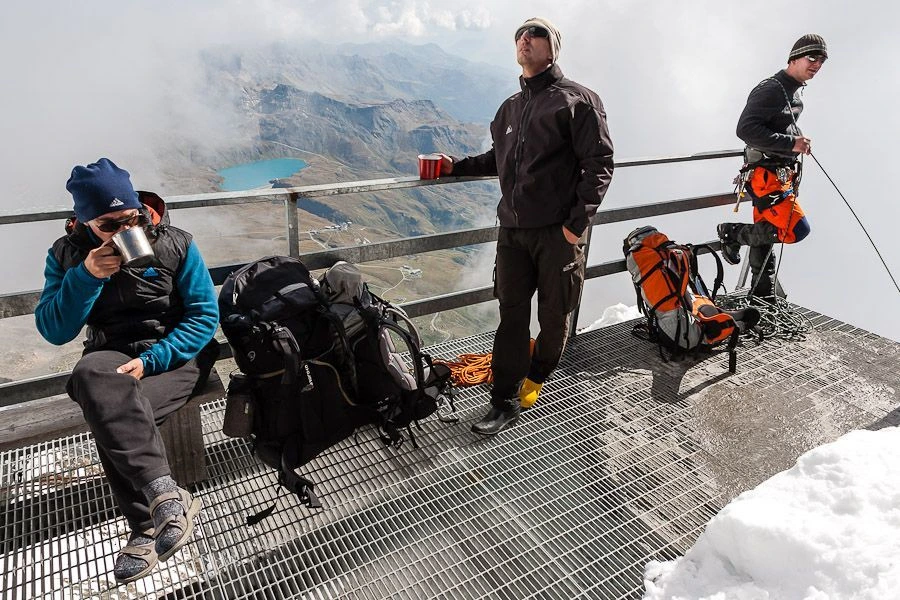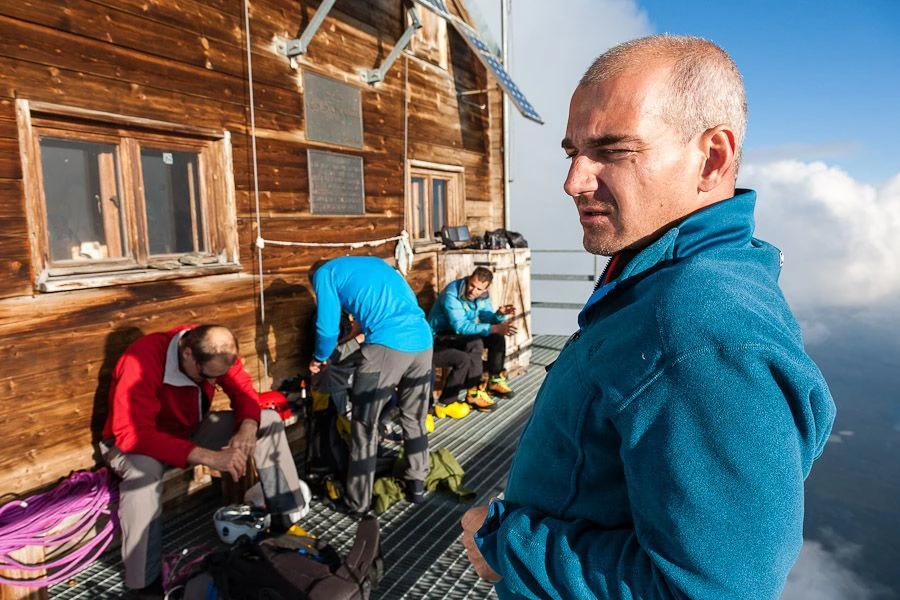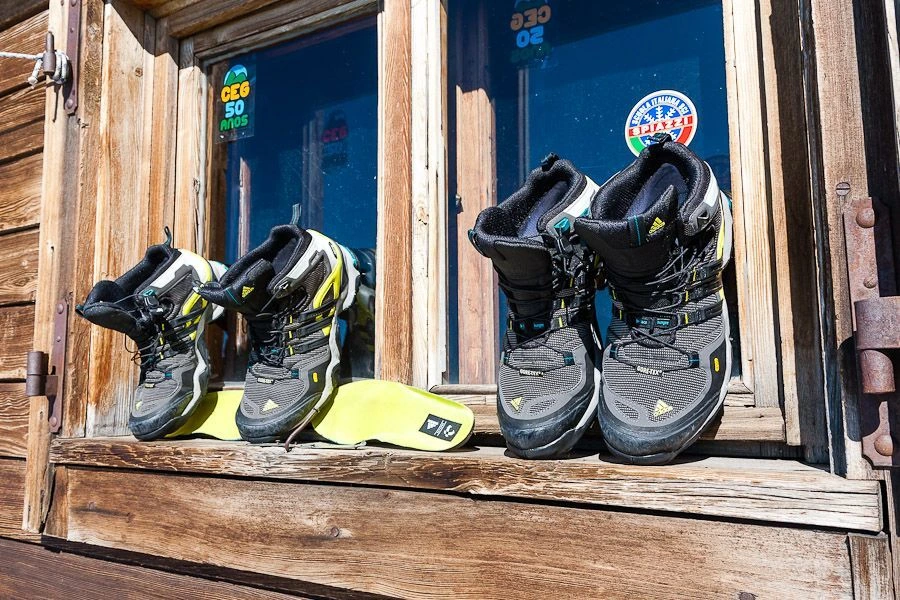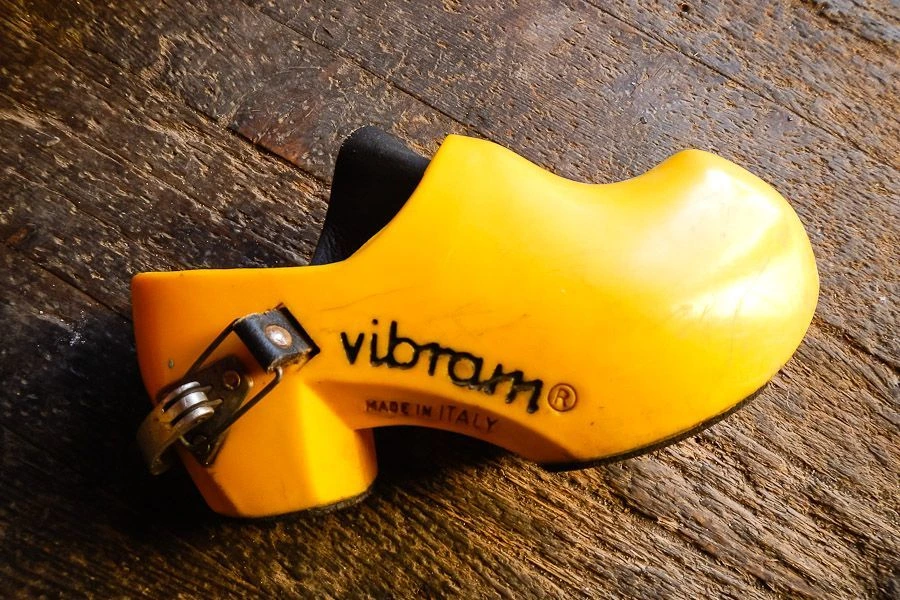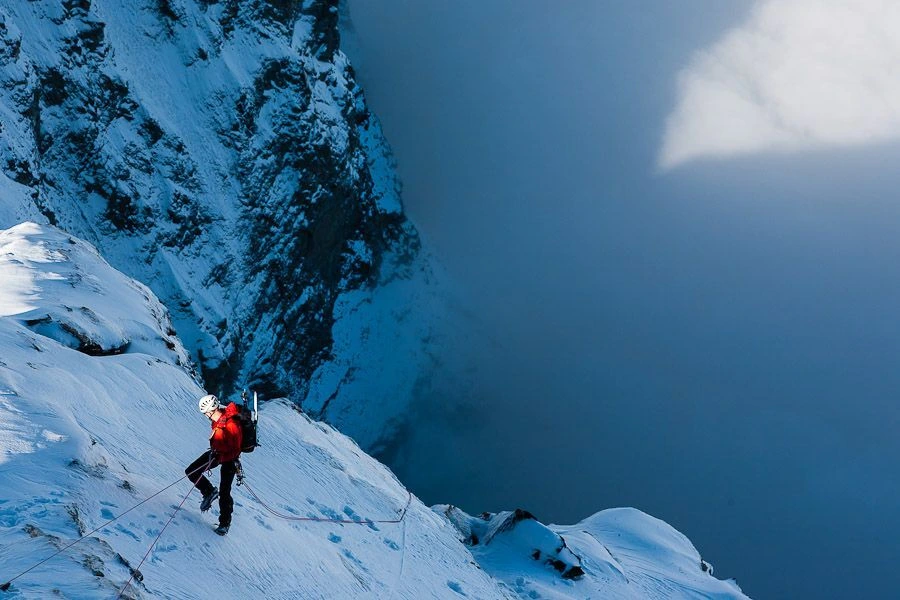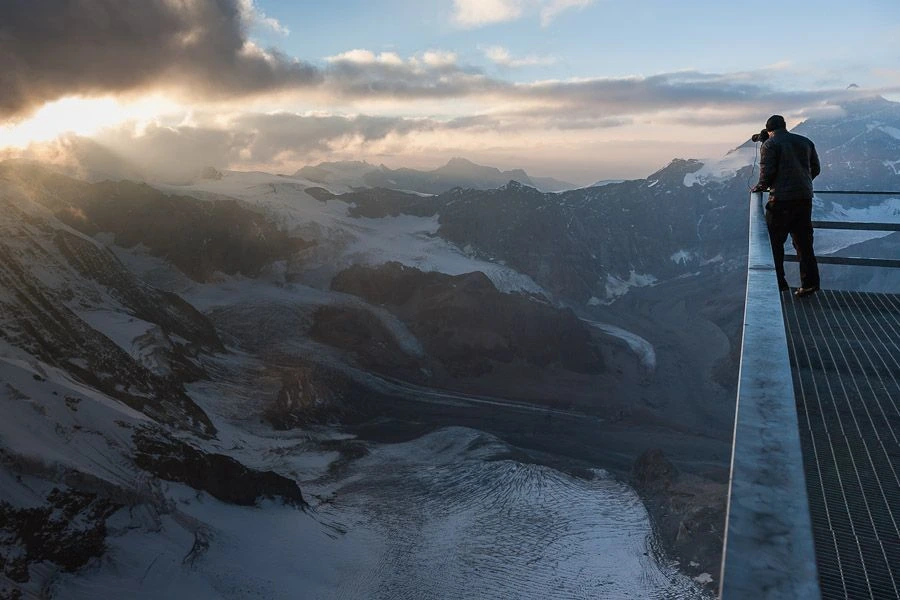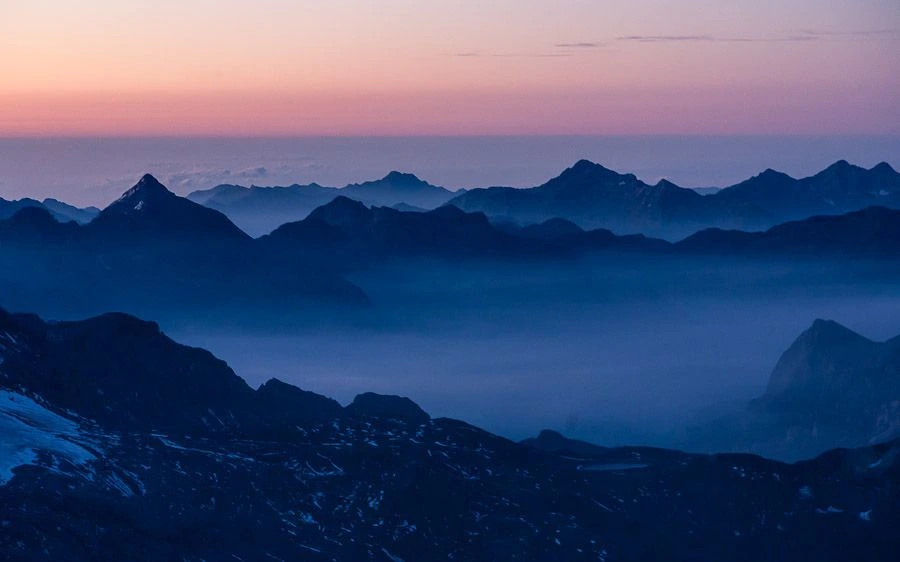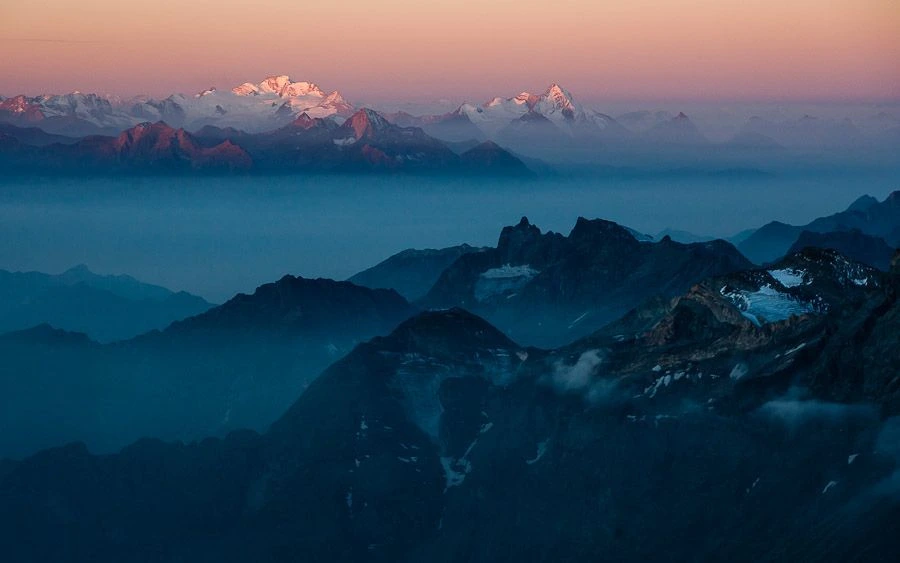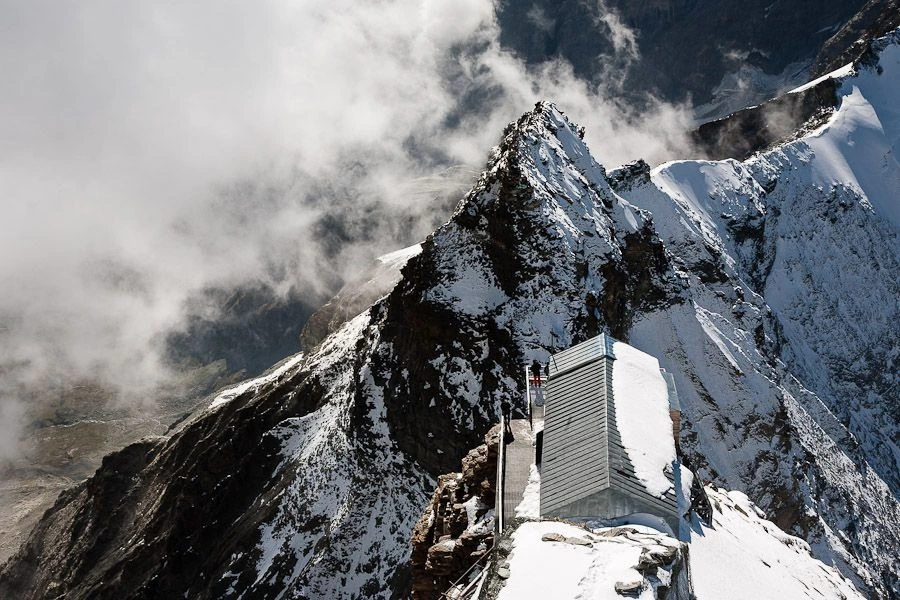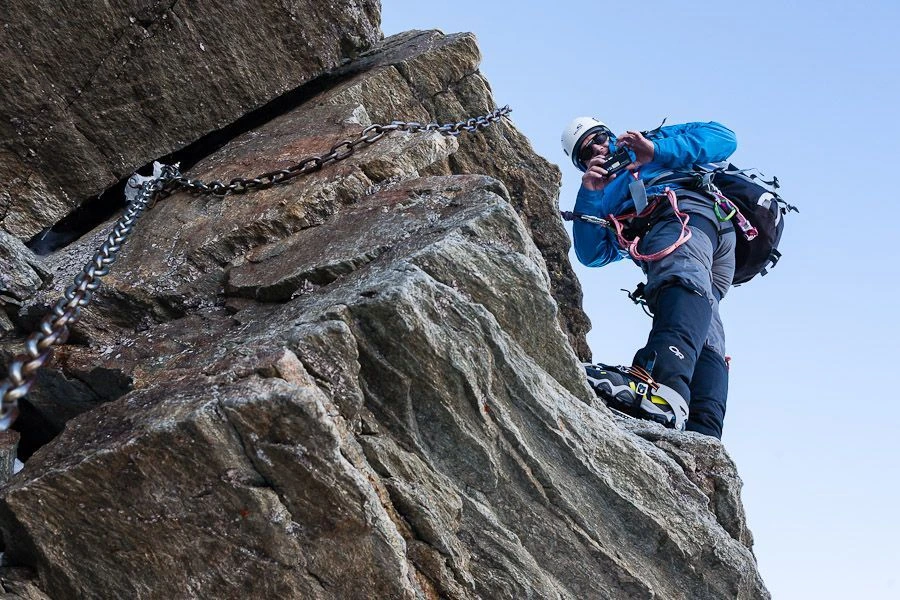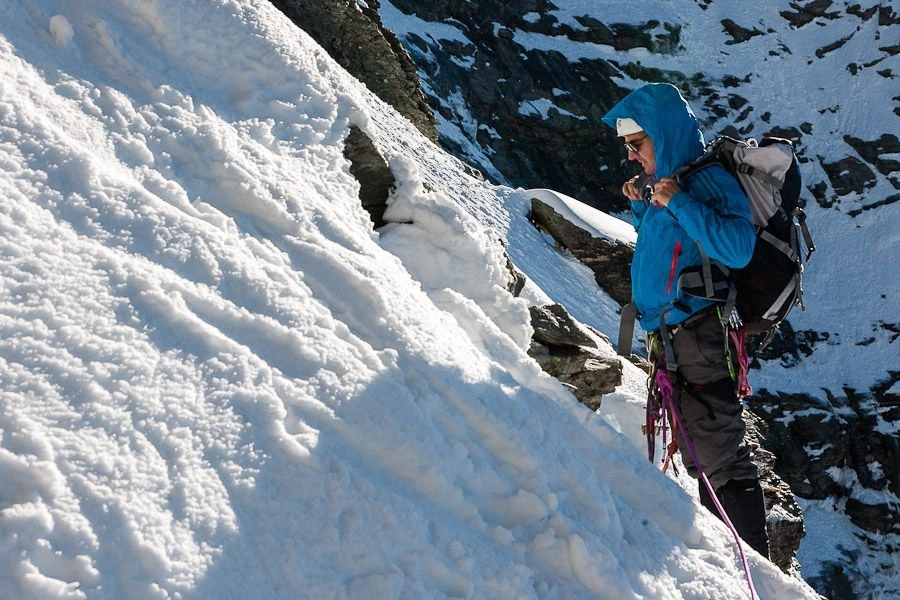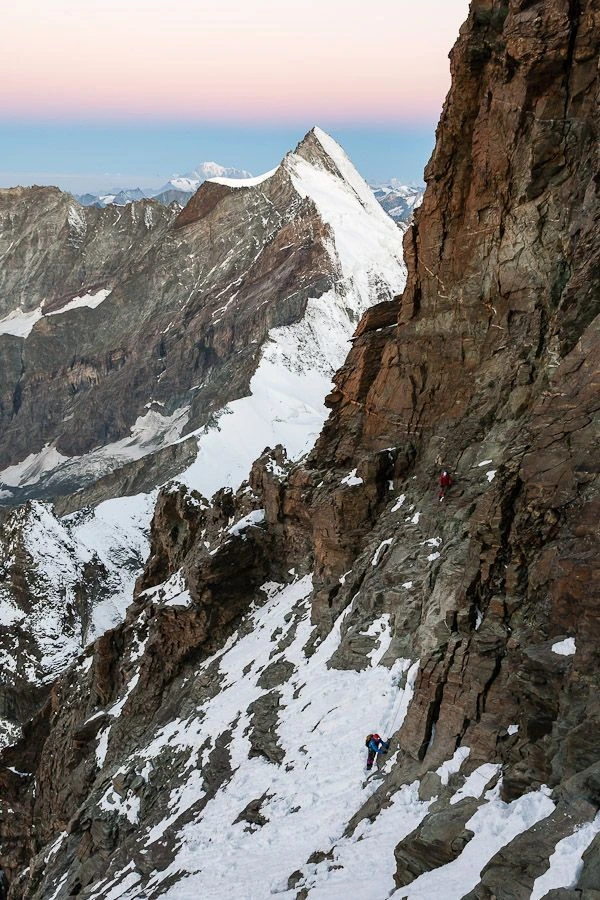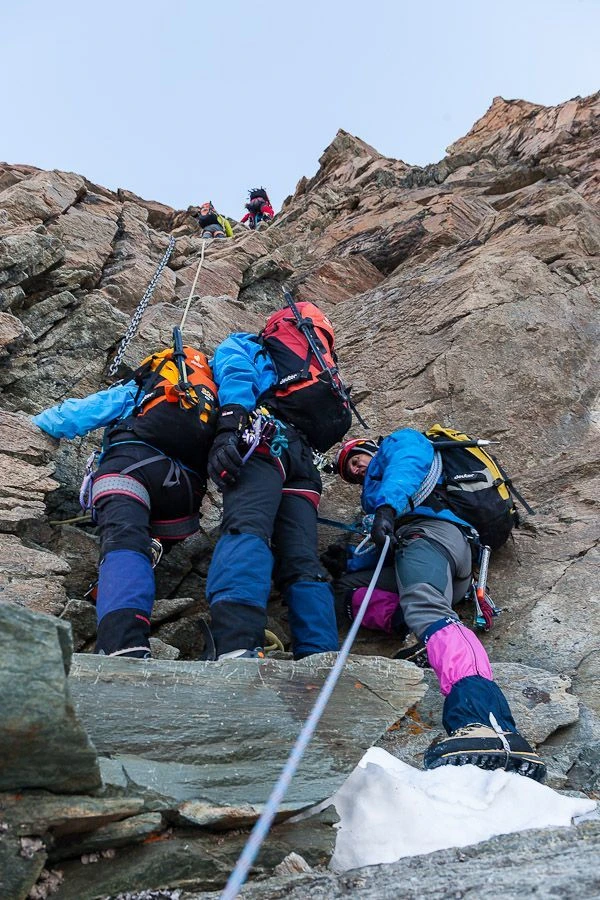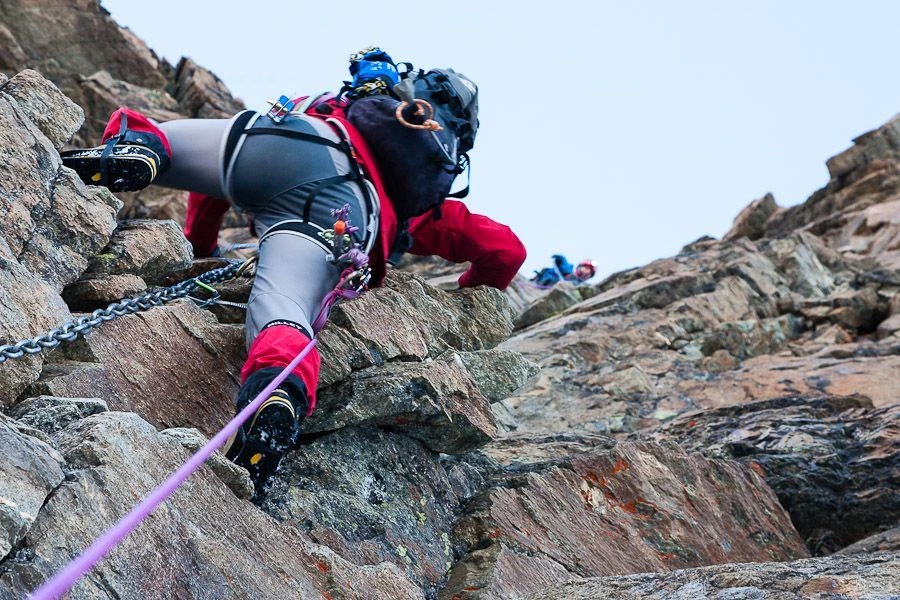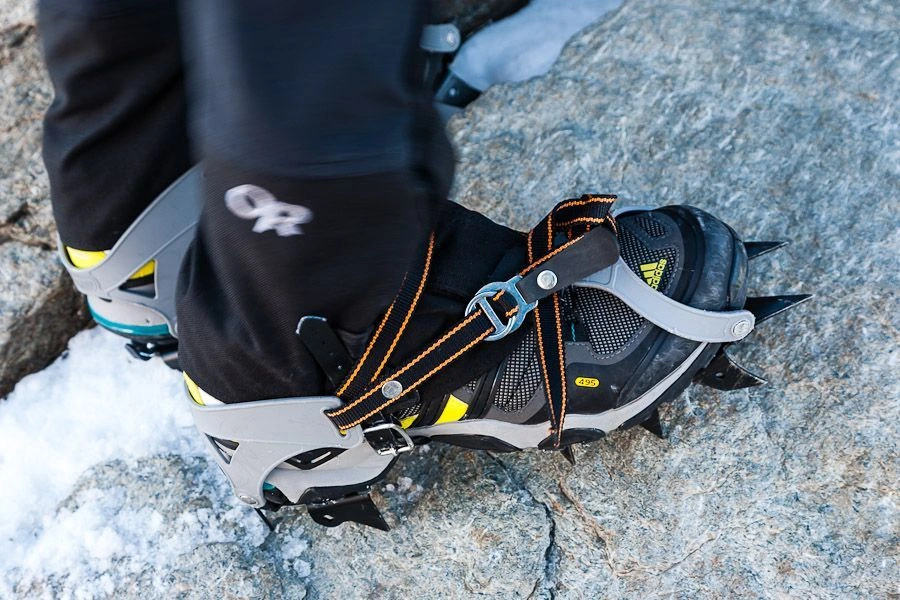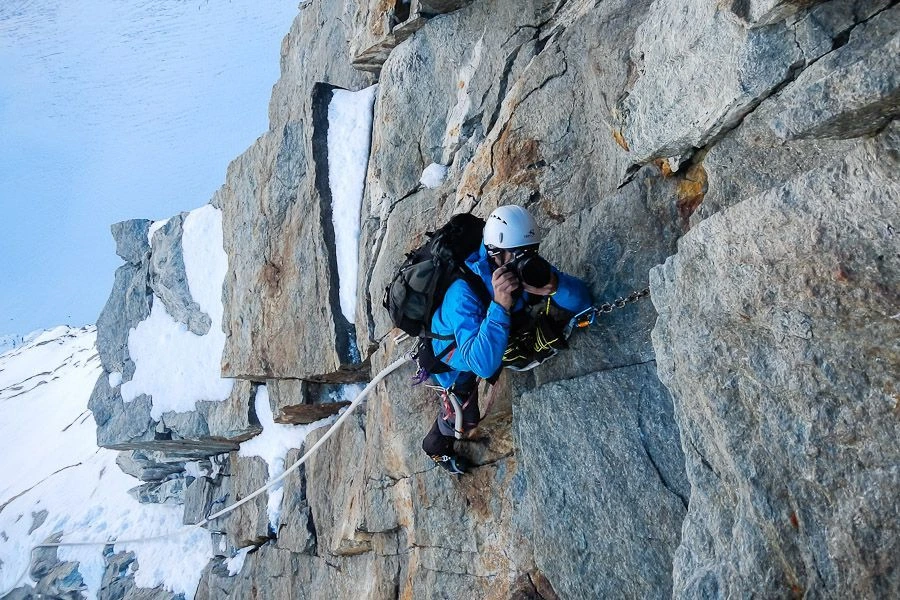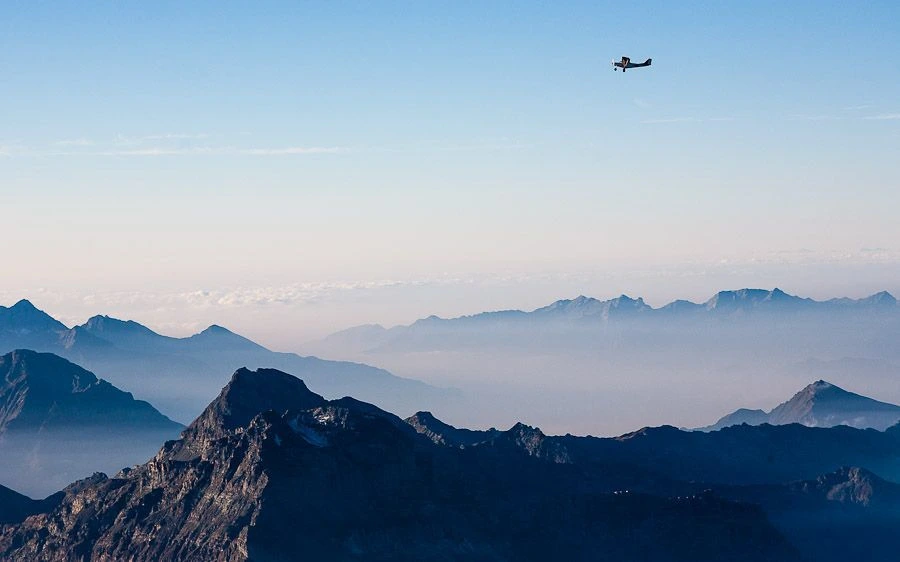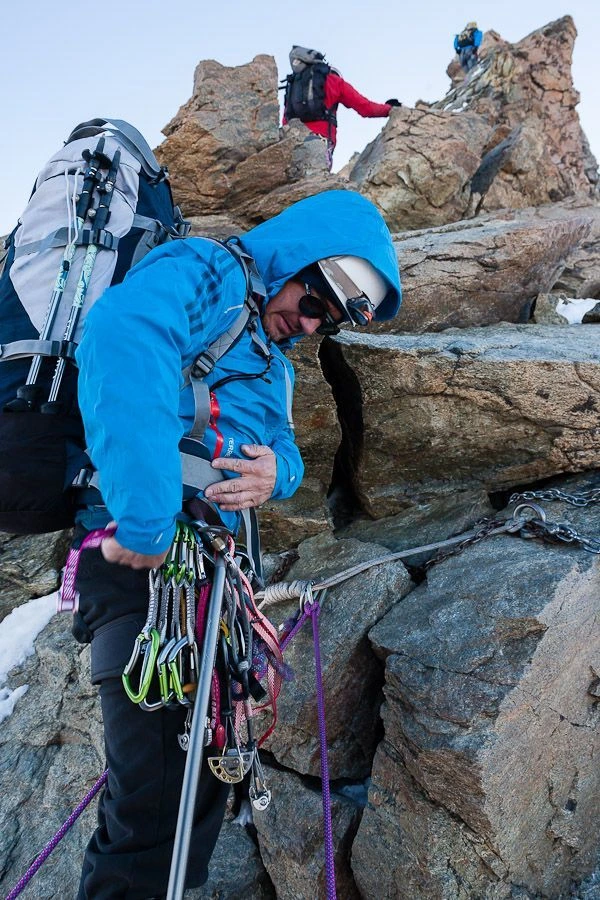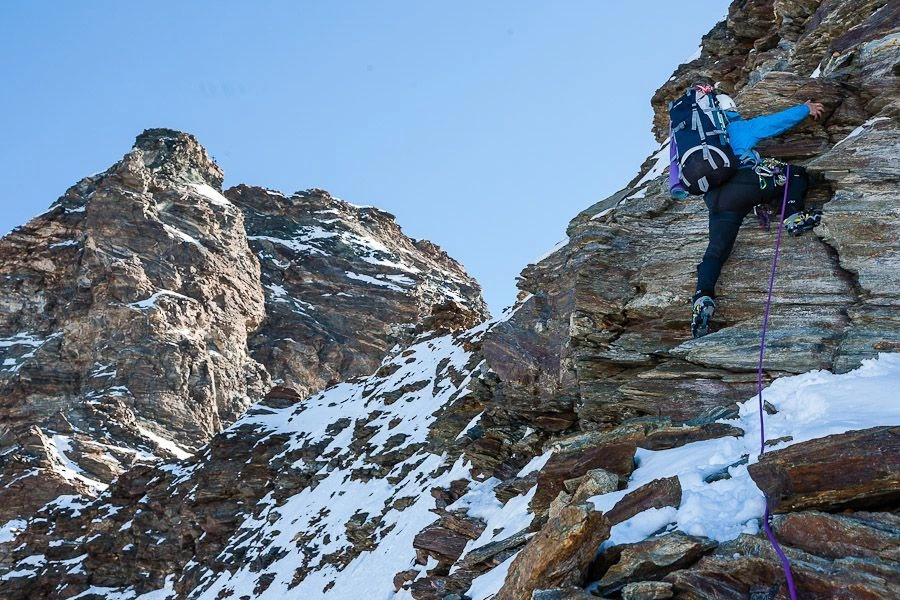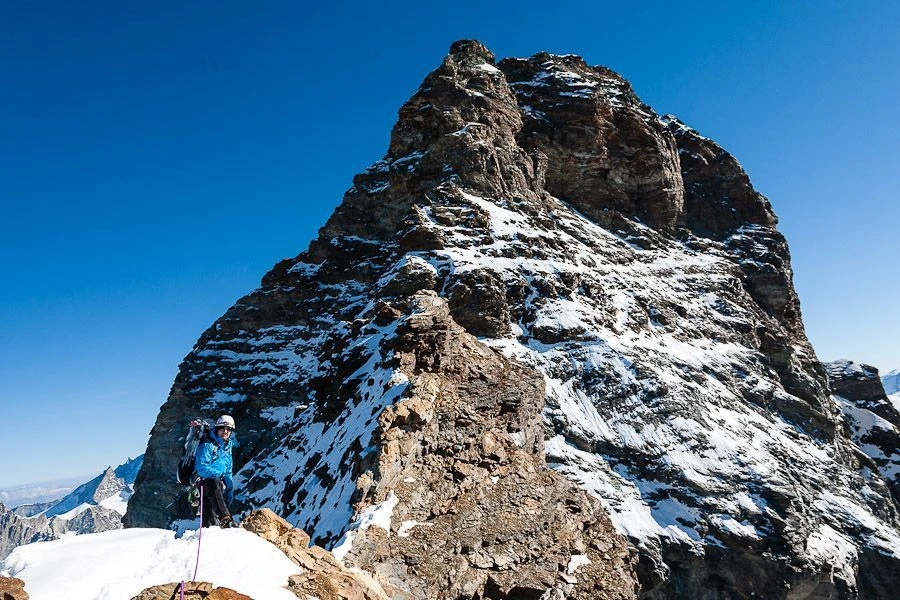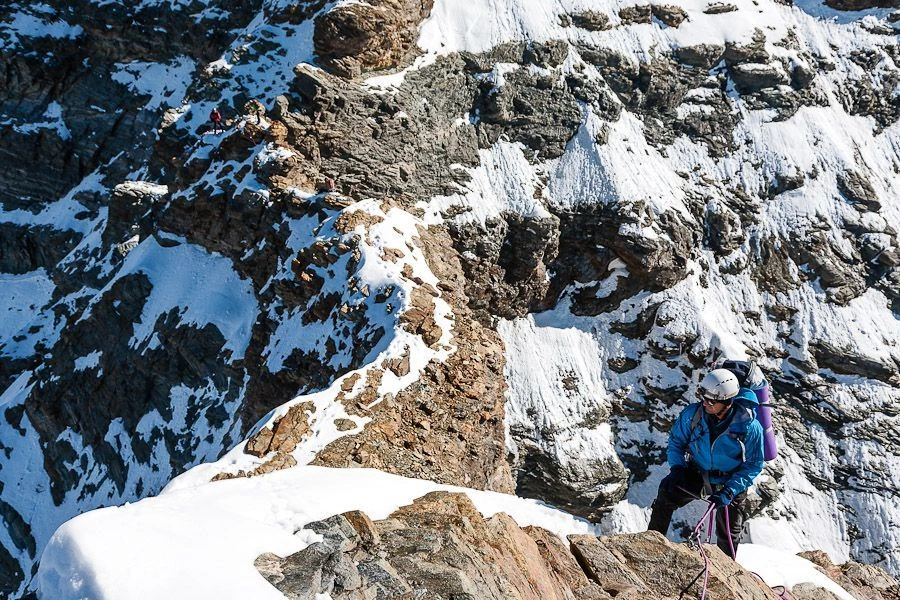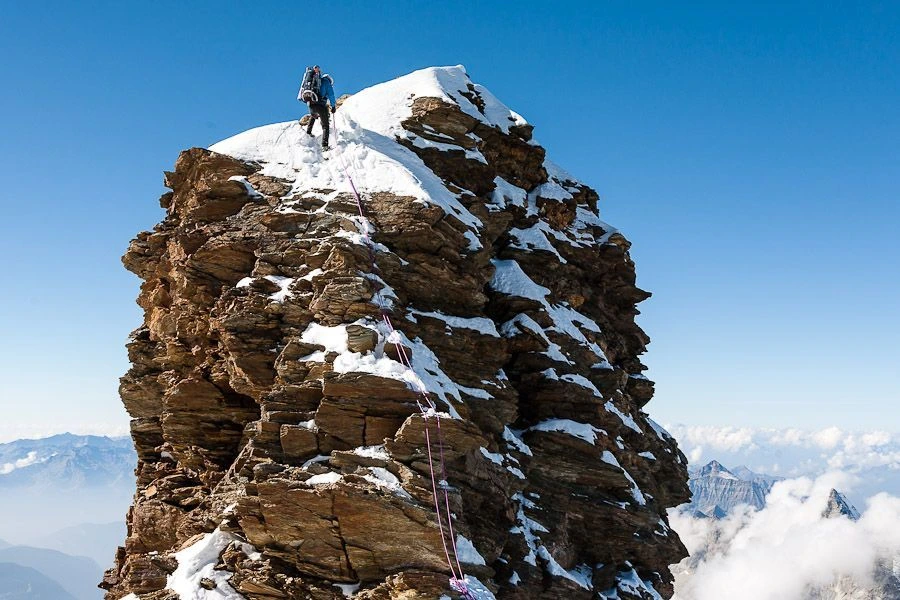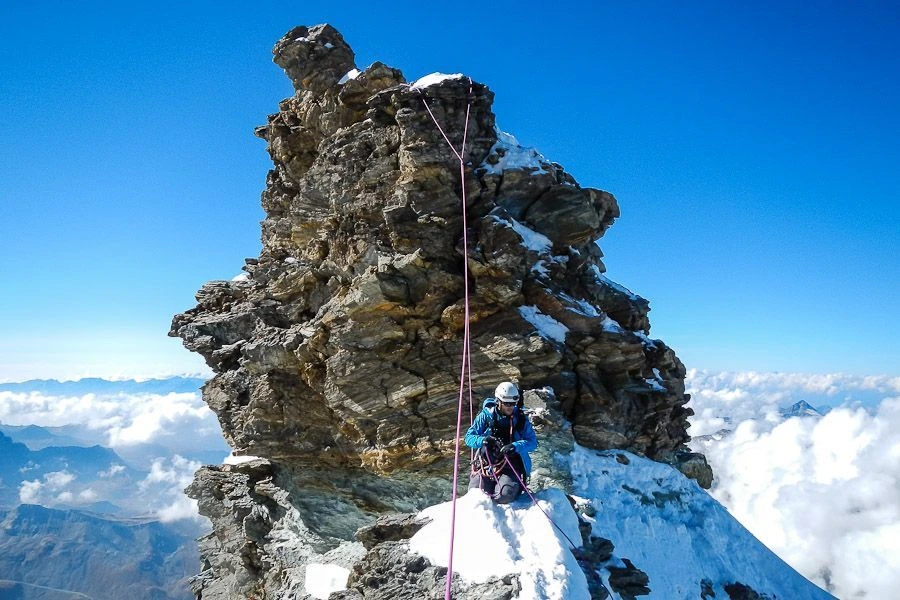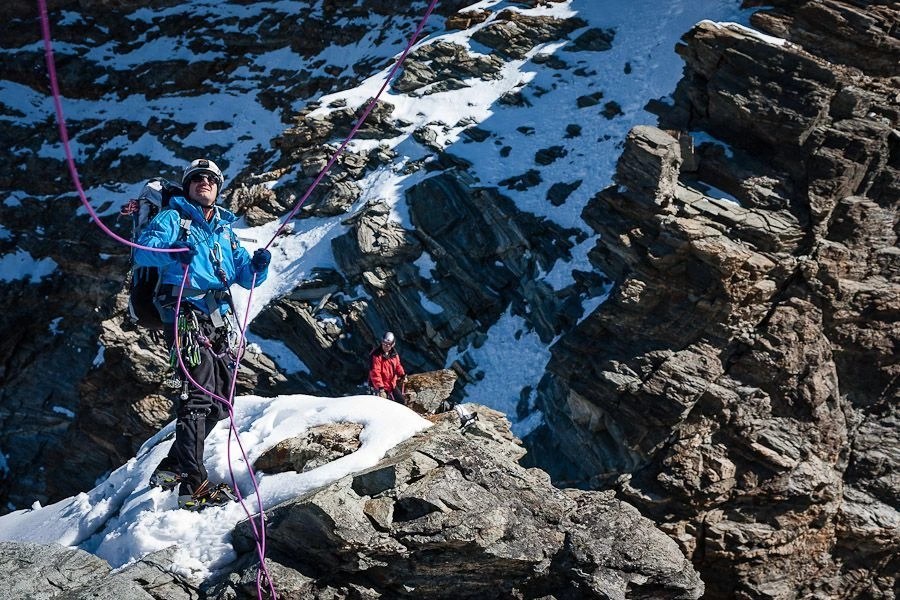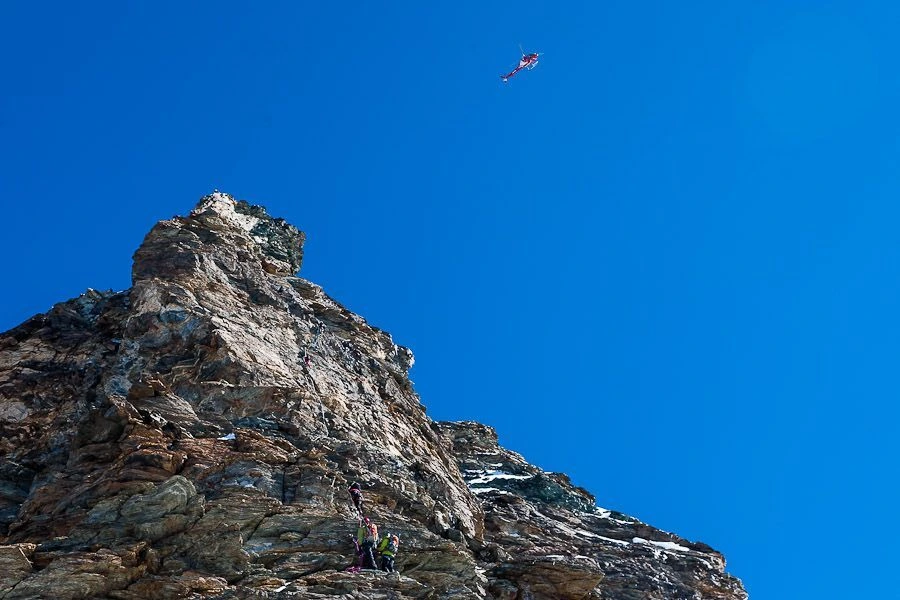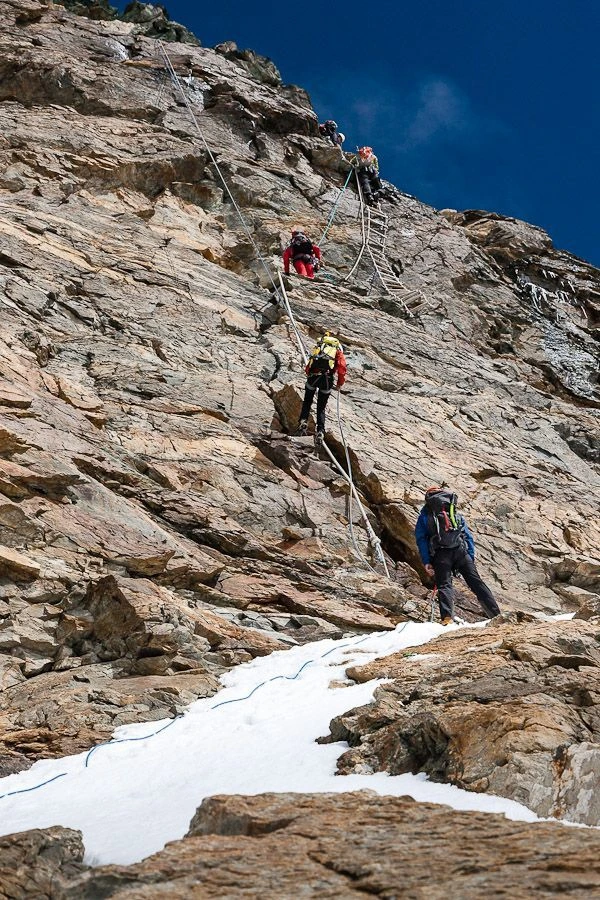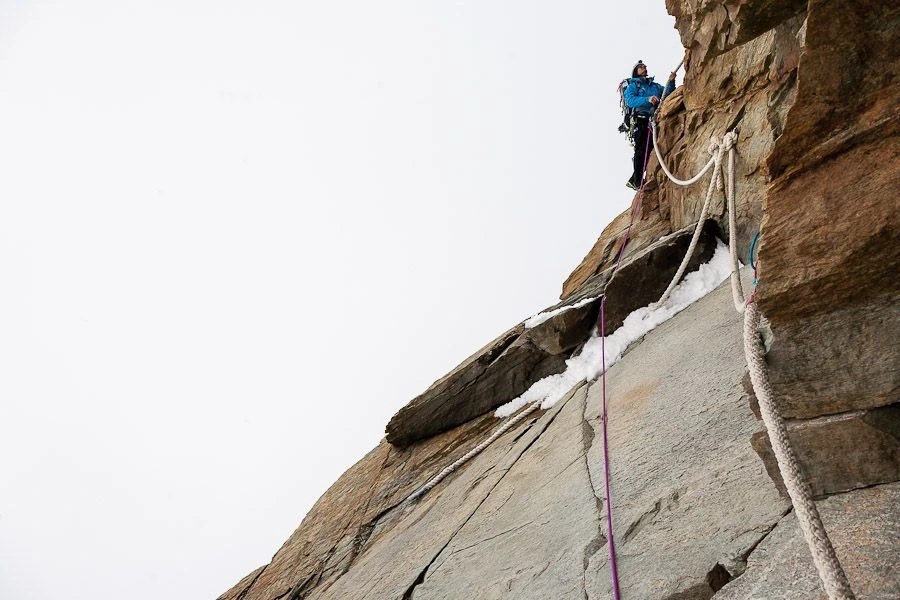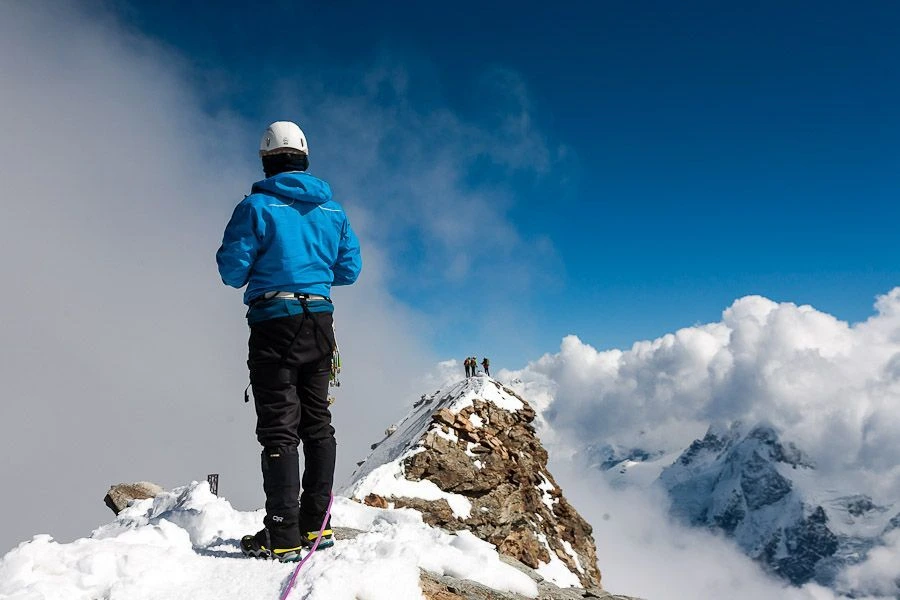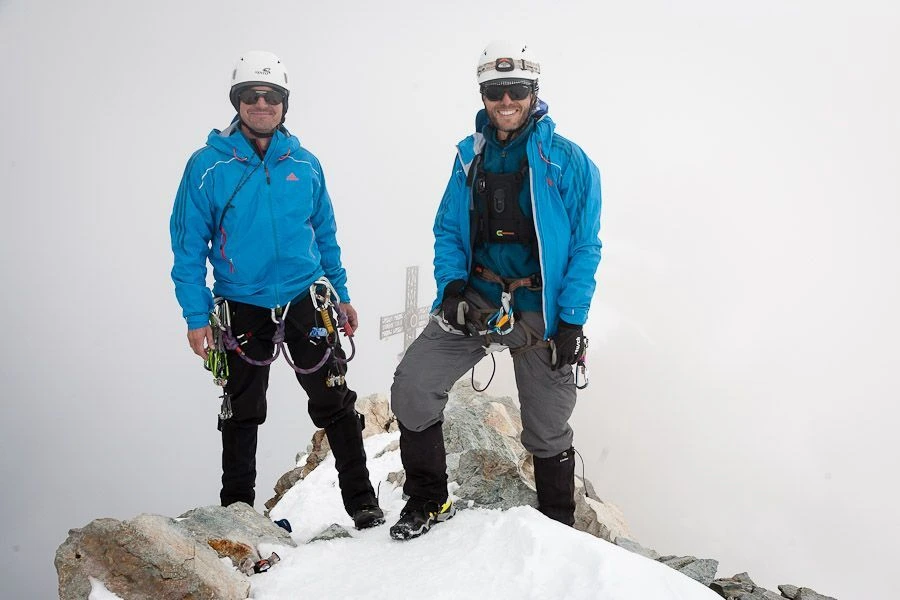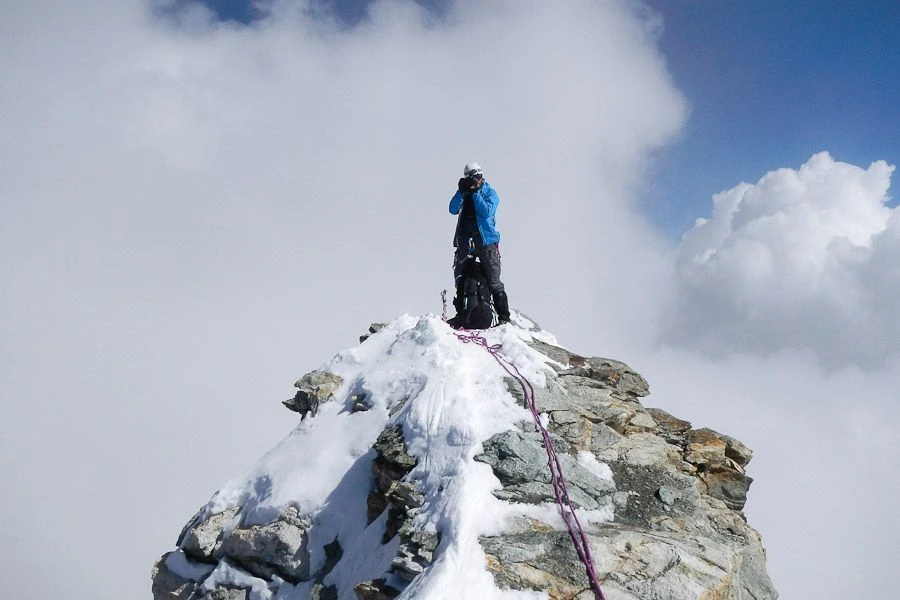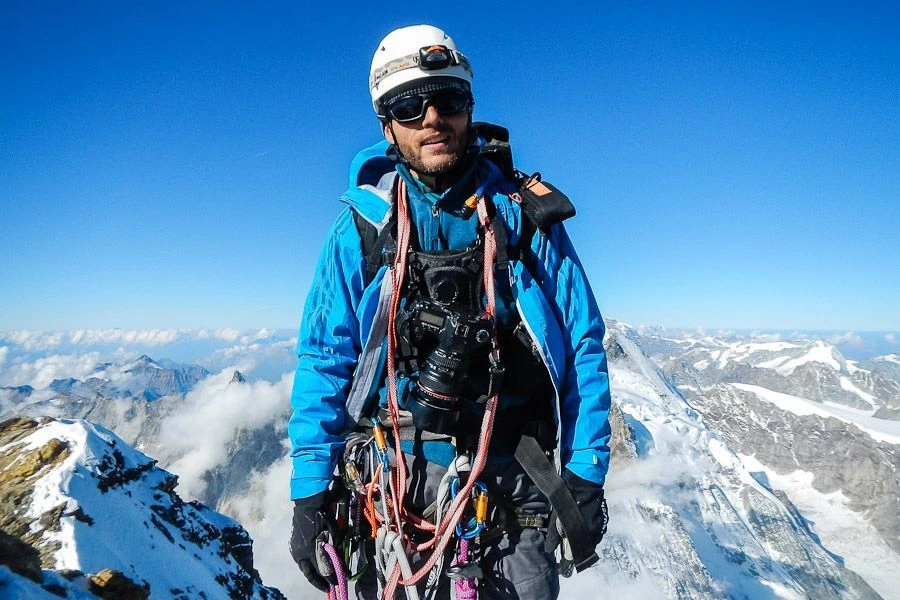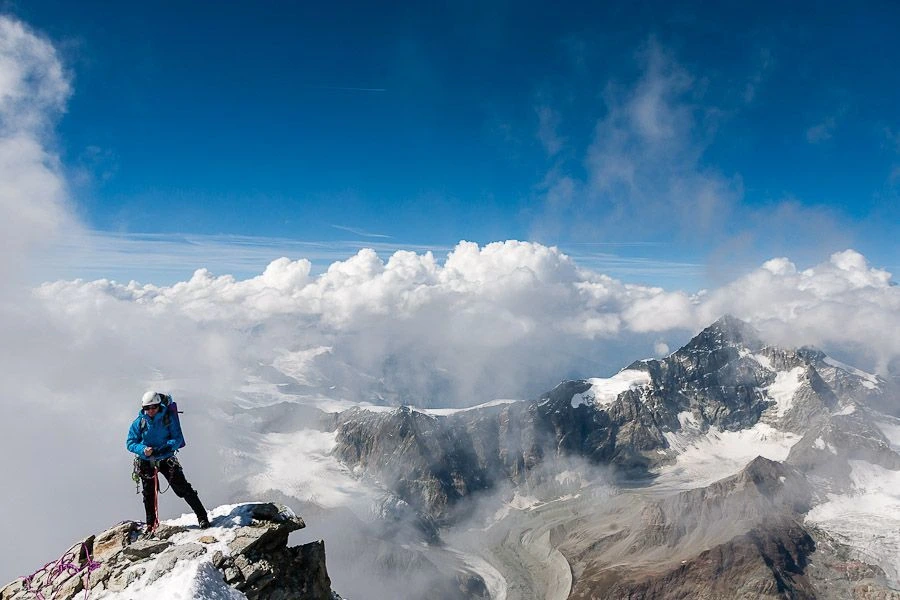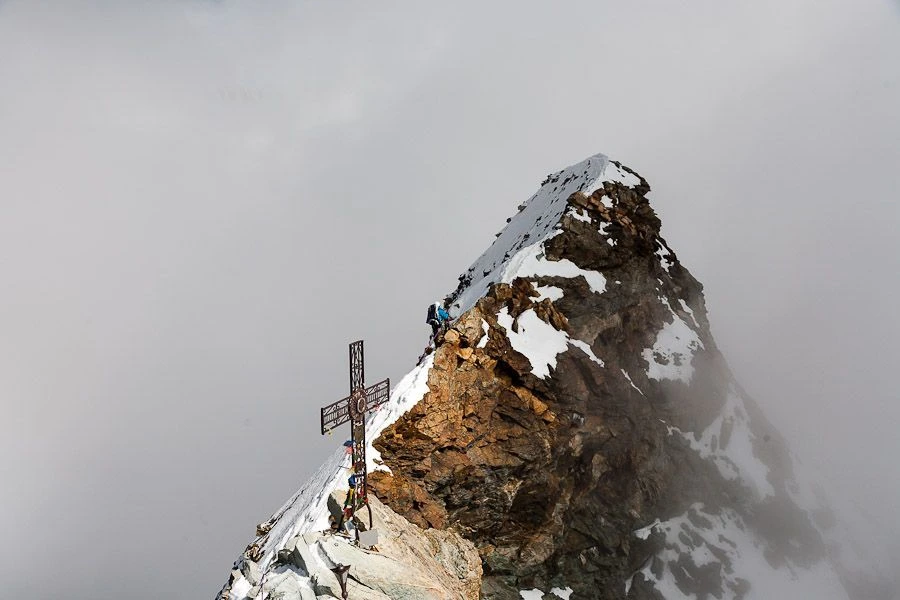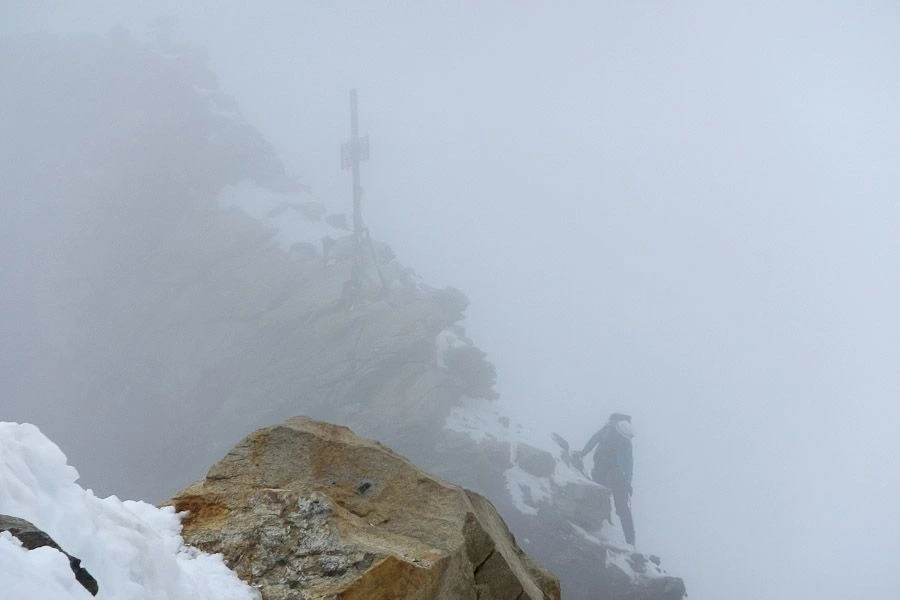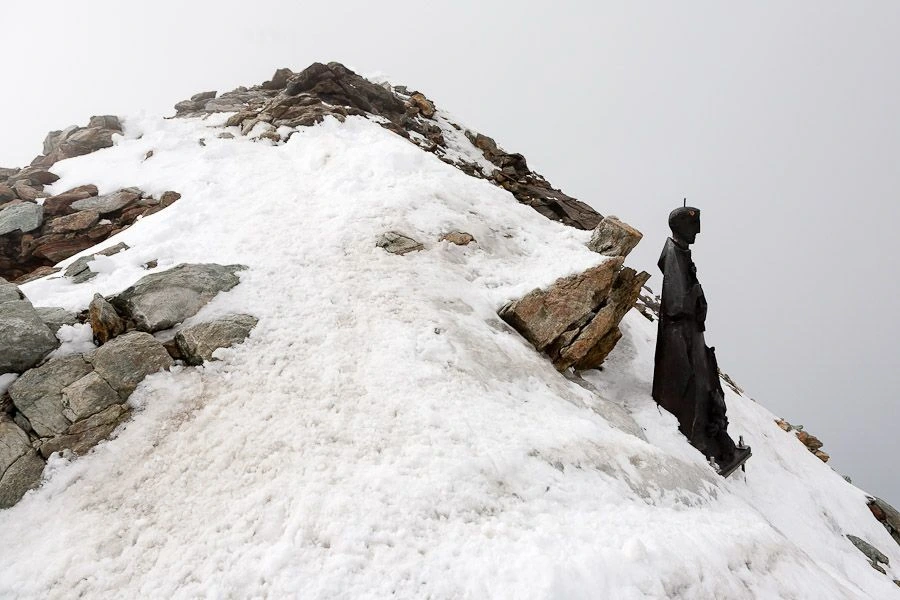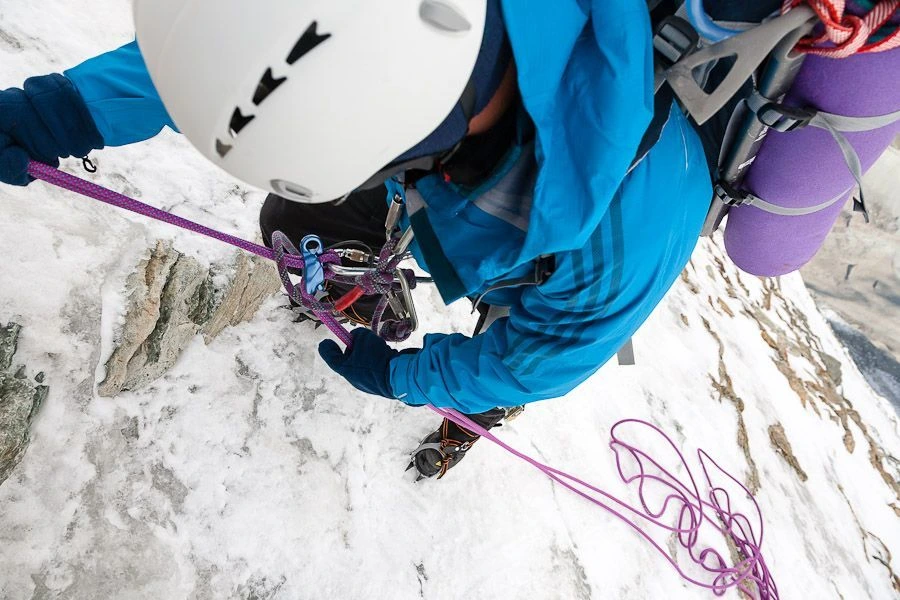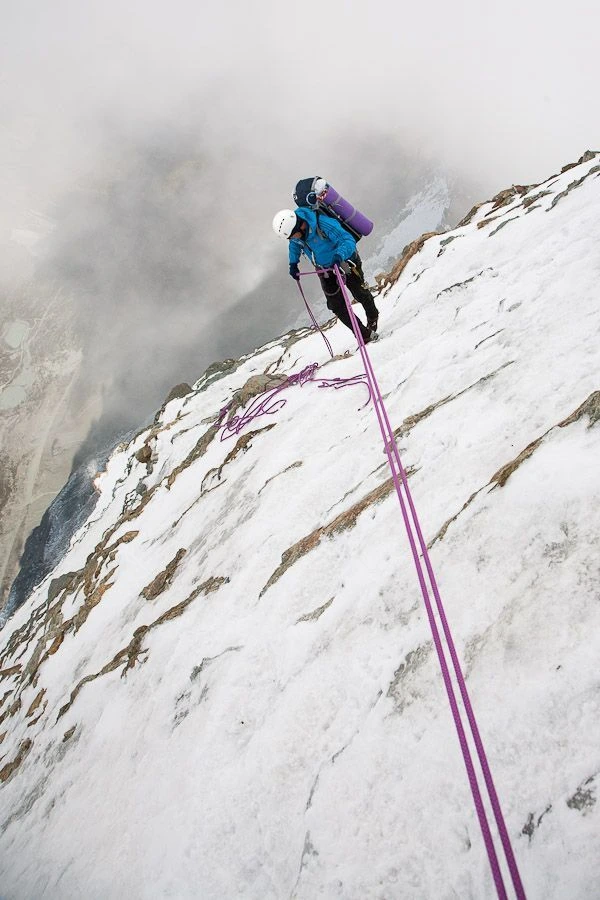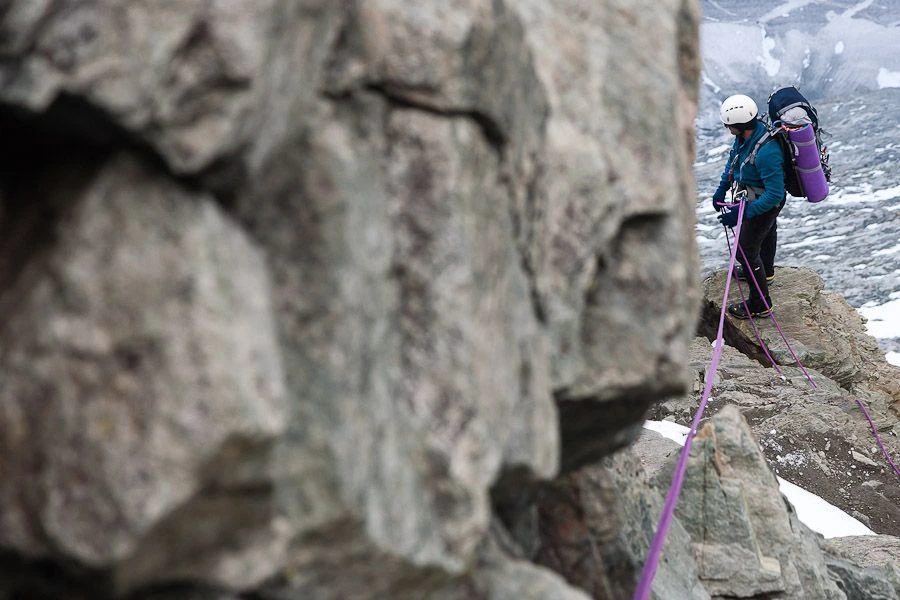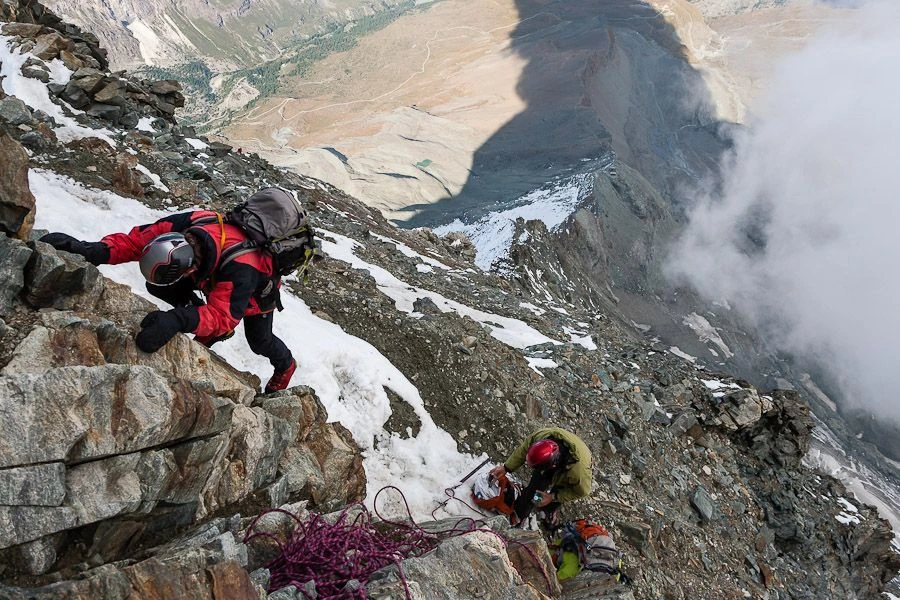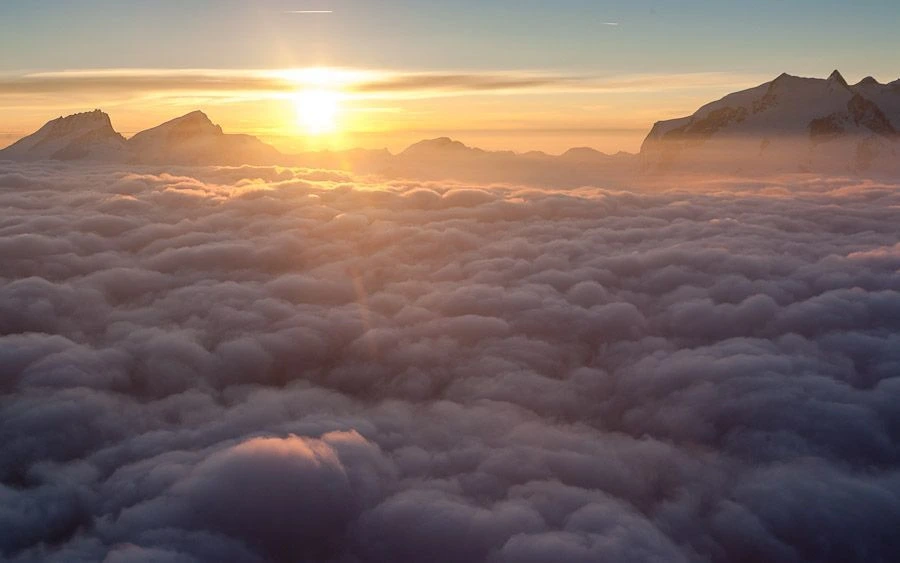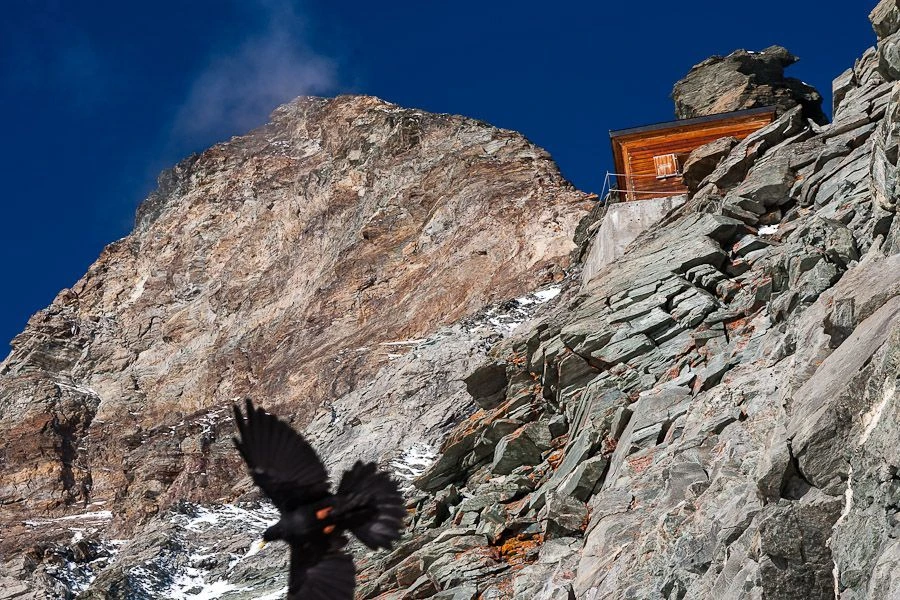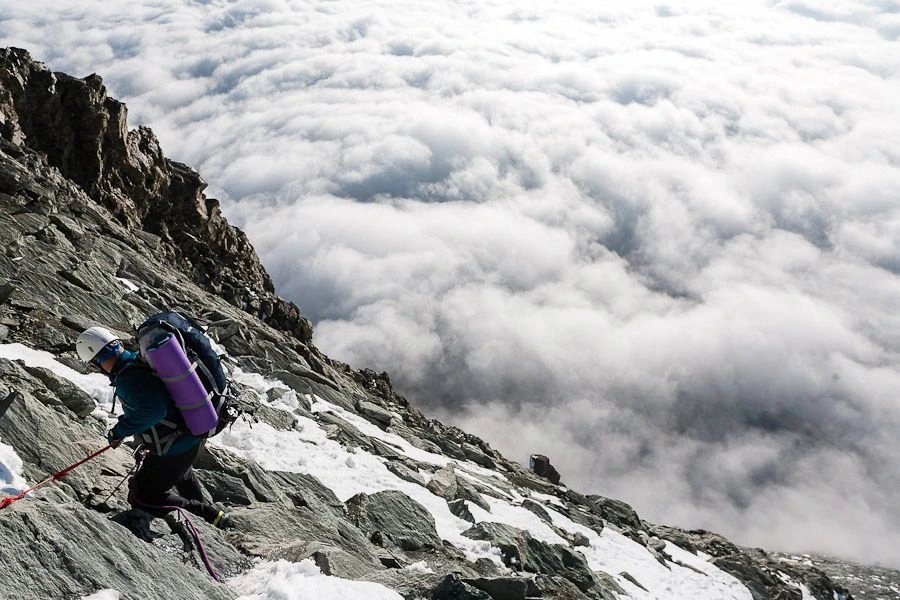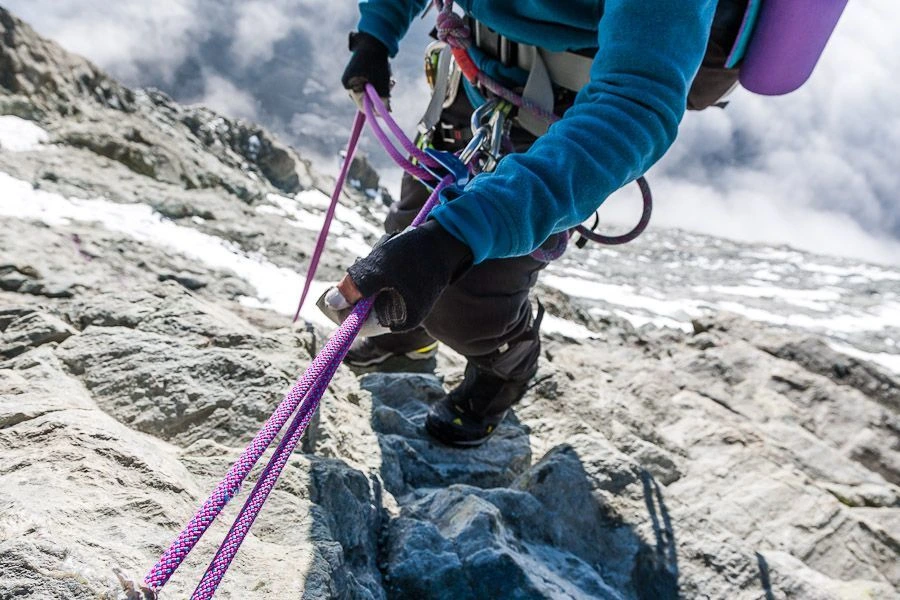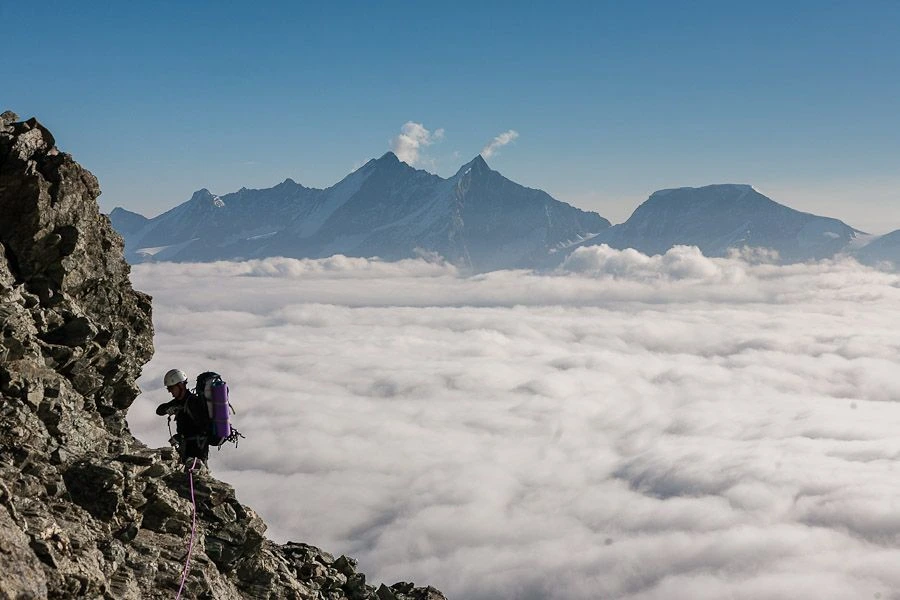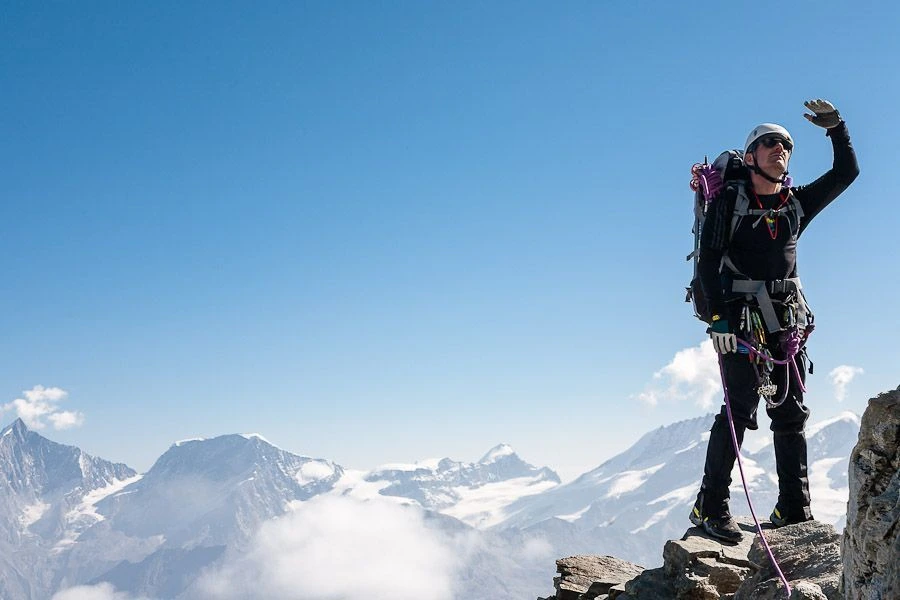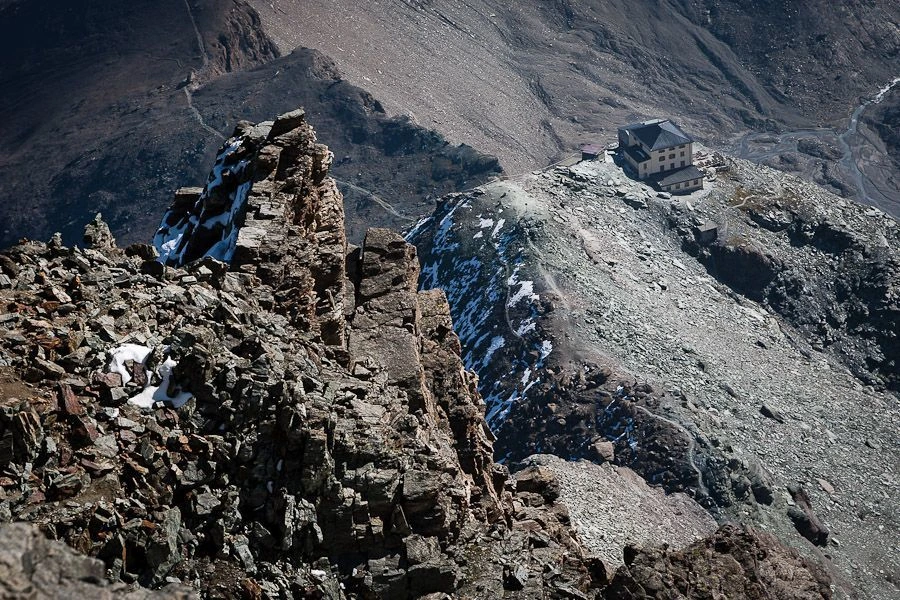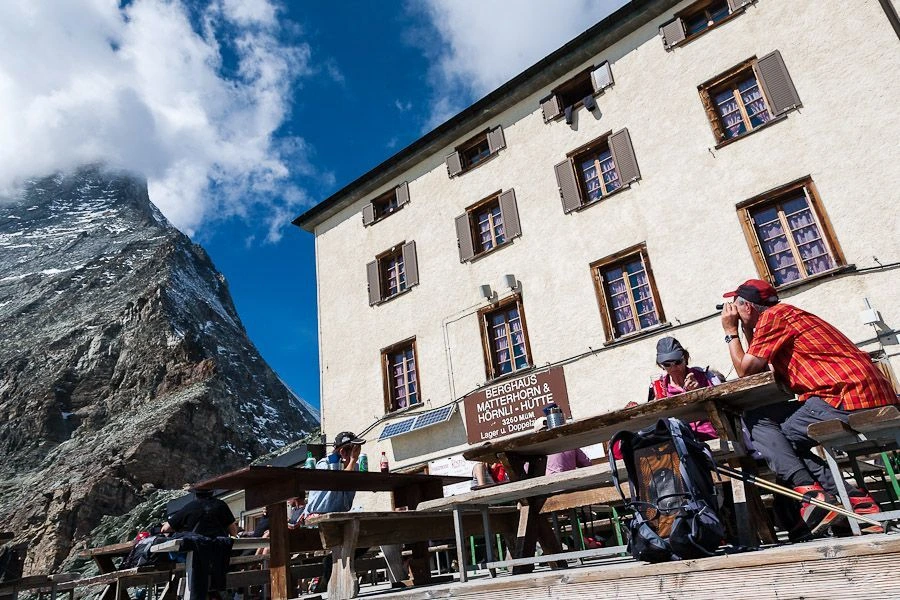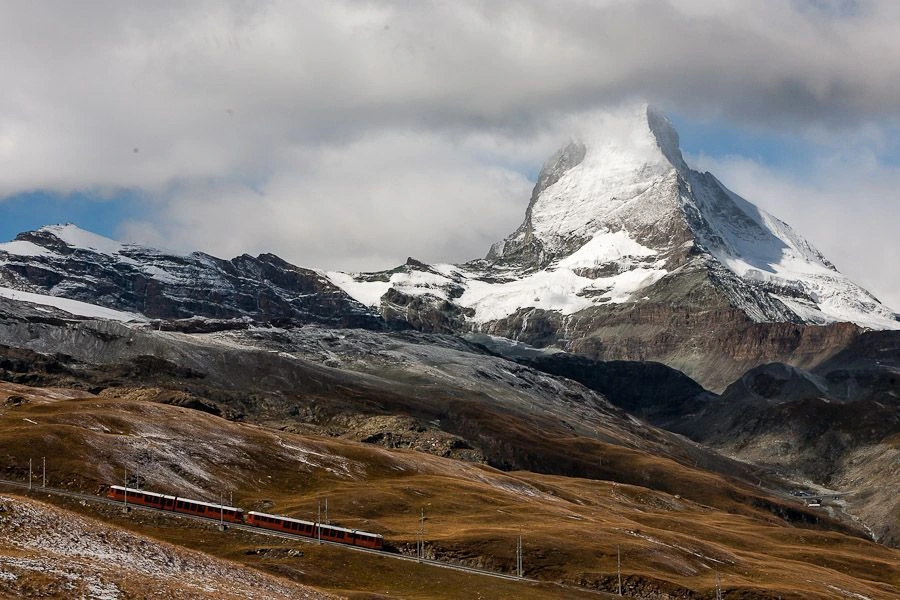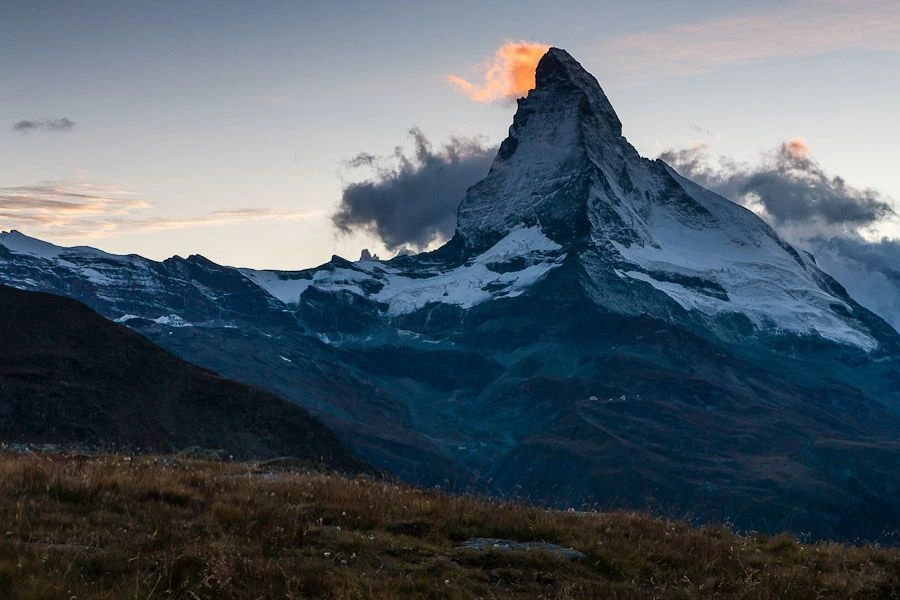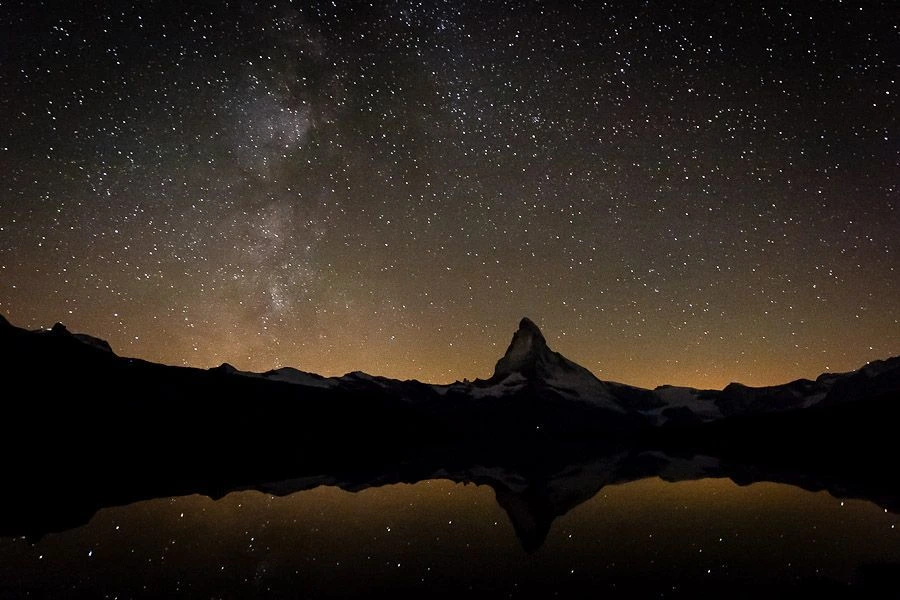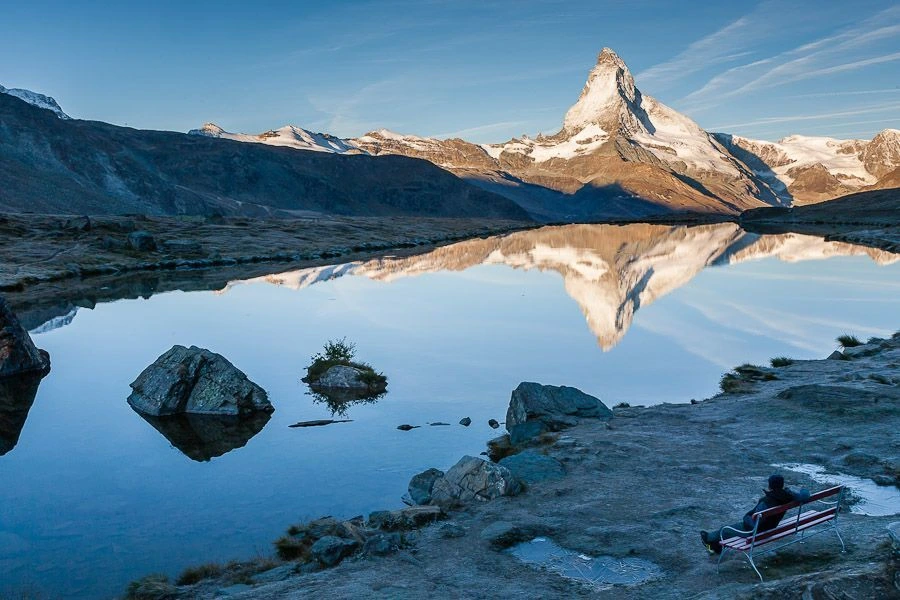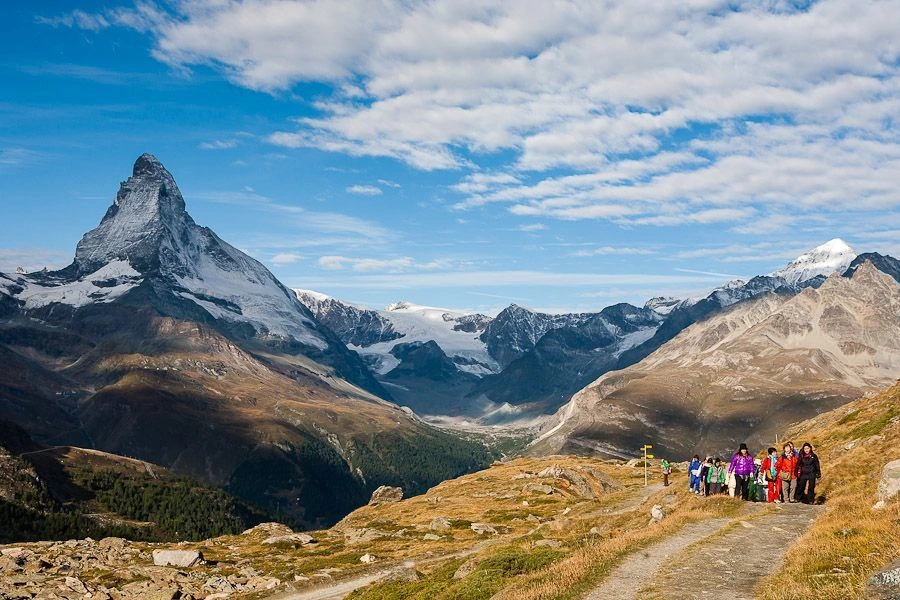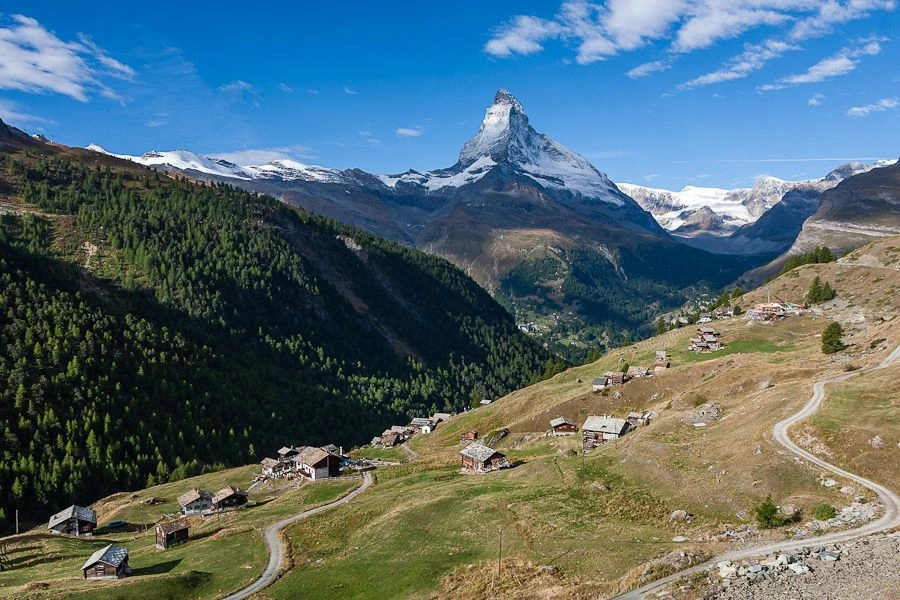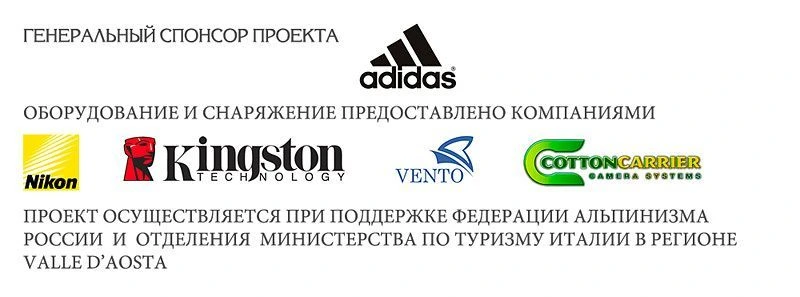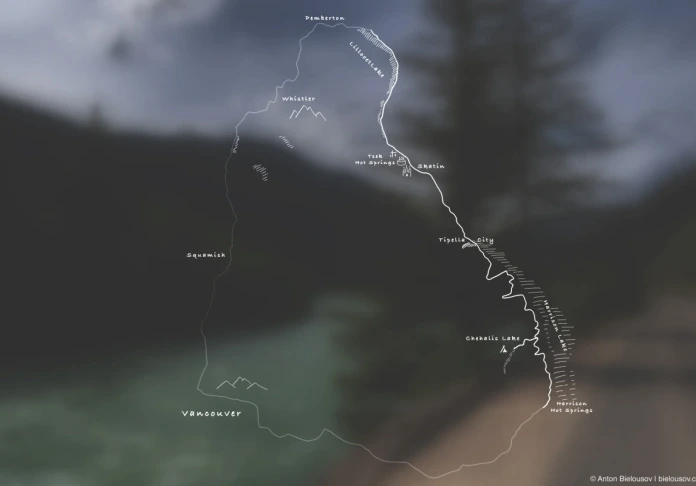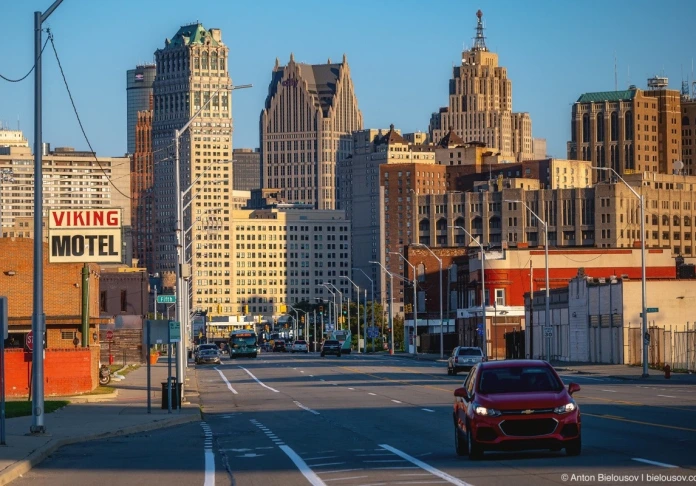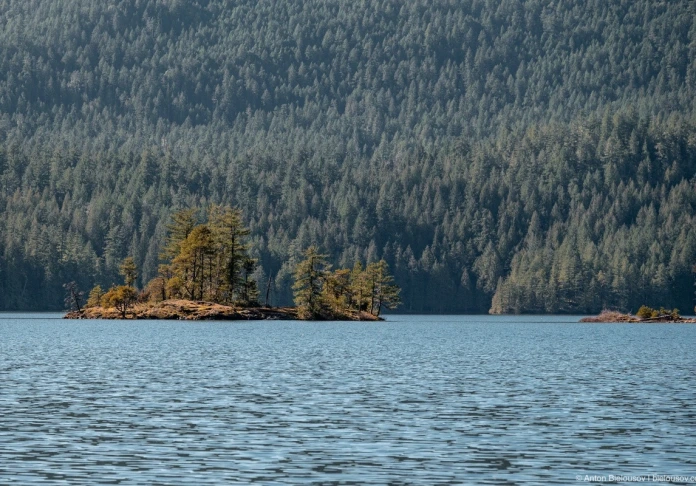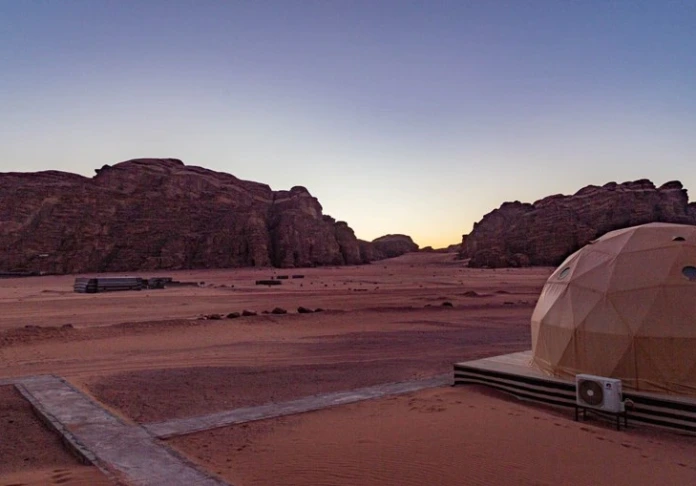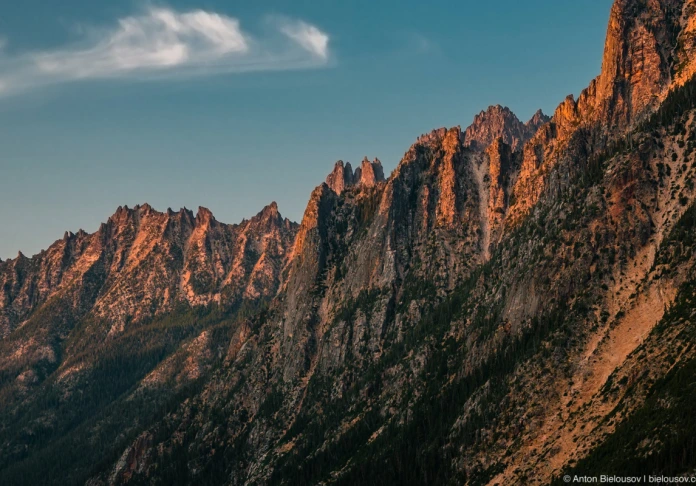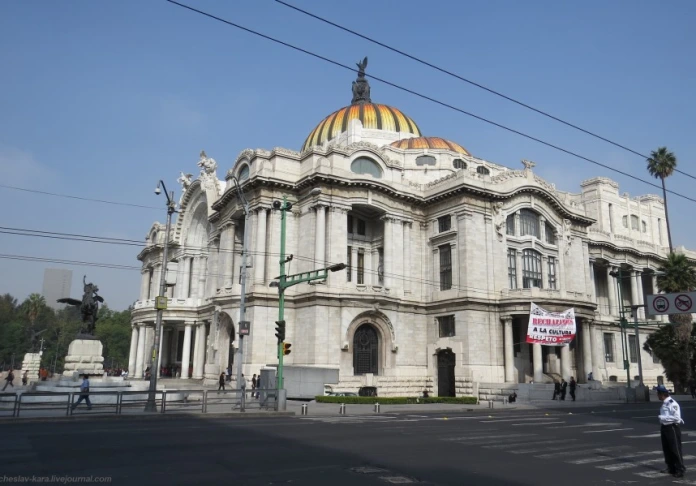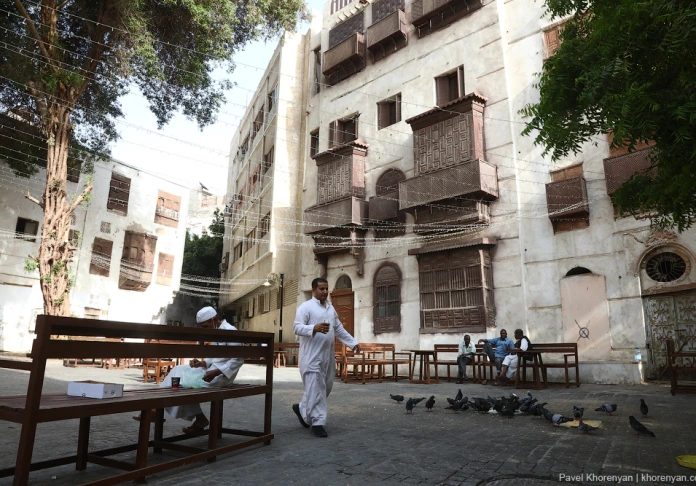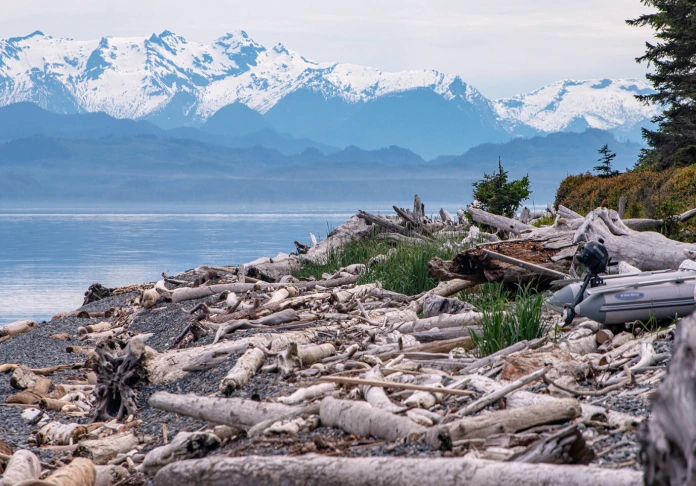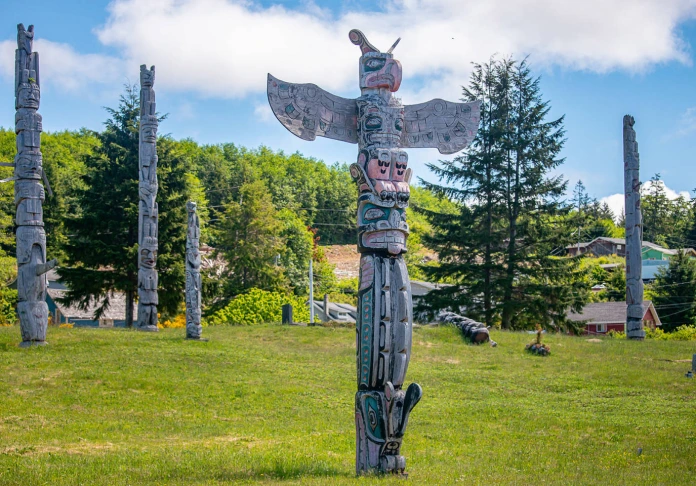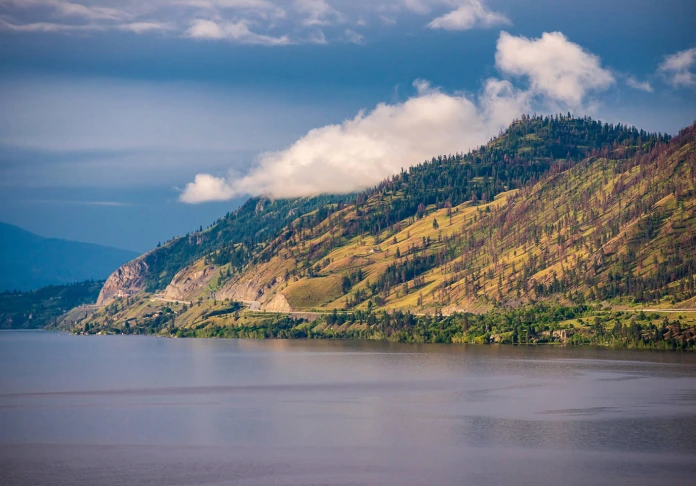From Italy to Switzerland via the Matterhorn
Author: Sergey Egorin, Constantine Dikovsky and tripod.
In September of this year, we (Sergei and Konstantin Egorin Dikovsky) climbed the Matterhorn along the crest of Lyon and down the ridge Hoernle, having carried out at the same time, proclaimed the transition from Italy to Switzerland through this wonderful mountain. This relatively simple, by climbing standards, the transition was exacerbated by two factors: the heavy camera, tripod and lots of accessories, as well as the fact that the Matterhorn was in the snow. We started from a completely empty at this time, the Italian village Breuil-Cervinia, ahead briskly extending grandmother stormed grassy slope and, after washing the waterfall, already on the road reached the hut Abruzzi. This hut is closed permanently, so you need to or immediately climb to the crest of Lyon to the hut Karel, or spend the night in a tent. We had a tent.
In the evening we met the guys from Poland, descends from Karel, who told us that they see no opportunities to climb the Matterhorn because of the very large amounts of snow. They also reported that came from Karel Abrautstsi to 12 hours under normal transit time of 5-6 hours. I must say that the usual tactic of alpine climbing is as follows: with a light backpack, in which you puff, a snack a couple of days, as well as thermos or drinker, you climb to the hut Karel, spend the night and 3-4 hours in the morning to go climbing. If you do not 12.00-13.00 on top, then turn back, go down to Karel and then - home. At this time, you're out of luck. Perhaps you are lucky the next. And the question here is not only in the physical or technical training. Fallen snow on the rocks increases the time the route is 1.5-2 times and repeatedly reduces the chances to reach the top. That is why, local guides in this weather sitting at home, because effort to raise the client does not meet the income. We are widely trumpeted about our ardent desire to go to Monte Cervino (who do not know, so call the Matterhorn in Italy), the Matterhorn, we pressed on the considerable load of photographic equipment, as well as responsibility to the sponsors, so we need had a higher probability of success than in the standard version of Alpine. It is logical reasoning that such backpacks, sprinters still do not, we additionally threw them food for 4-5 days, tents, sleeping bags, mats and burner, thus becoming ready for any vicissitudes route. Lost in speed, but significantly increased the chances of success. The next day we went to the hut of Karelia. The phrase "up to the hut" sounds innocent enough, but in relation to Karel, it means that we climbed the "mutton foreheads", climbed a fairly steep couloir, then - a rolling pin on the edge of a snowy field, have been very, very steep traverse across muddy snow slides, climbing again passed ternary, rocks covered with snow, and in front of the hut overcome 7-10 meter 90-degree wall, pulled back pulley block backpacks.
The hut deserves separate words. This well-knit, fairly roomy structure hanging over the abyss on the powerful steel supports. There are no permanent caretaker, but there is a gas, bunk beds for 40-50 people, mattresses, blankets, pots and yellow plastic slippers "Vibram" female sizes. At the time of our arrival at the hut were two guys from Poland and one from Lithuania, which have already taken several intelligence outputs on the crest and made sure that the return before dark from the top do not have time. Really a lot of snow. The next day they went down.
The weather promised sunny days, and we decided to wait, hoping that some of the snow will melt and make our plans more feasible. As a result, we spent 3 days at the hut, made a reconnaissance sortie to Grand Corde - steel chain that will appear on the crest before the peak Tyndall and realized that snow really a lot - sometimes sank up to his waist, which is extremely slows down. During this time, several groups and solo climbers came and went with nothing. Only one mega-fast Spaniard alone reached the summit and returned after dark. But the "weather window" is not eternal and wait more than had neither the opportunity nor sense. Catching the weather, night at the hut came a new group. Egorina Alarm rang at 4.00, lifting the entire cabin to his feet. Hastily sipping tea, putting their "nepodemnye" and turn on the flashlight, we went upstairs. Immediately behind us came a few groups. Not wanting to go over our heads, we ran on the rocks ahead, almost groping and to reconnoitered the route. Through this night race, we had heavy backpacks at Grand Corde hour earlier than day ago - with light. The path from Karelia to Grand Corde goes to the right of the ridge, at one point going at it on the rocks 3-4th category . In some difficult and dangerous places proveshany ropes and metal cables, which, incidentally, does not negate the need for a Friend and bookmarks. First go particularly well. Grand Corde, as already mentioned - is a chain of 30-40 meters in length, for which you can stick to and insured, getting on the wall of the ridge.
On the crest already cooler can blow a breeze. The movement is generally on the left side. Rock slab is replaced by rock slabs covered with snow but with very limited capacity of insurance. On the way we met some wonderful "alpine" ridges, which have been teetering on the edge of the rock or snow, arms outstretched over the void on both sides After an implicit predvershinki Tyndall ridge split into separate bastionchiki, breaking through which also bring a lot of emotions, as there is much to fall, and opportunities insurance is not so much.
We approached the top of the tower. The tower itself was impressed by its 200-meter high and almost vertical walls on which hang ropes and even stairs. Here then began tumbling - mixed, interrupt the via ferrata, particularly memorable in the presence of weighty backpack.
We went up to the cross on Monte Cervino at about 14.00. Without border formalities, breaking a small provalchik, we have moved to a higher Swiss top of the statue of St. Bernard.
Clouds covered all kinds, and took a few pictures, we went down the ridge Hёrnli. Come on, that is, started hanging rappels and tumbling down, the benefit of various anchors and armaturinami on the crest of a lot, and rock slabs covered with snow too much for running down. Since the second rope, for reasons of weight, we left the hut Karel, then slide it turned out to 25m. And to Hёrnli hut at the bottom - 1200 m in height. In general, we entered into a rhythm of infinite prodergivany, slopes, again and again prodergivany slopes. On the road caught up with two bundles of Swiss descended mainly climbing.
After the N-th number of rappels, we found that dropped a total of 500 m, the sun was on the horizon, and we are standing right in front of the shelter Solvay. Between the descent into darkness and an overnight stay in close house, chose the latter. It so happened that we were in the role of "good nurses" for five hungry Swiss and a young couple from Poland who were in alpine style, ie no nothing. Some tea for them and mashed potatoes. It was a very beautiful sunset.
In the morning we went down, letting ligament of Hёrnli coming up. After a few rappels, among the rocks started this path, sometimes steep, sometimes quite steep. We found it with the help of the Slovenian guide that led down an elderly woman from Mongolia. They use to Russian.
And then we waited for a nice dinner on Hёrnli with a wonderful view of the Matterhorn in Zermatt descent, walking in the surrounding lakes and return to Italy through the pass of Teodulo. Matterhorn reigns over all the surrounding valleys. Absolutely magical mountain.
Not to say that it was an easy route. He was quite extended and took a lot of energy. I want to thank adidas for excellent equipment and sponsorship of our projects, the company Vento for excellent cat, trekking poles and other climbing equipment, the Kingston for fast and reliable memory card, the company Nikon - for providing photo equipment , company Cotton Carrier - for an elaborate suspension system camera that leaves hands free for climbing.
Special thanks to Anna and Marina Stolbovoi Sivokon, for their great help in the implementation of ideas, as well as Anne Soden - the representative of the Ministry of Tourism of Italy in the region of Aosta, kollosalnyh for support and hospitality! And more. Thank you to our friends who care about our children and bear the brunt of "everyday life" as we squirm through the mountains with their crazy ideas!

